Índice de contenidos
- Publicaciones científicas en revistas (35)
- Libros de investigación (2)
- Contribuciones a congresos (38)
- Otros trabajos académicos (4)
- Paquetes software (6)
- Libros técnicos (131)
- Artículos divulgativos / educativos (308)
- Otros materiales didácticos (87)
- Manuales en formato digital (3)
- Repositorios (14)
- Aplicaciones web (2)
- Tutoriales (68)
Publicaciones científicas en revistas
Revistas indexadas por JCR
- [29]
-
María D. Pérez-Godoy, Marta Molina, Francisco Martínez, David Elizondo, Francisco Charte, Antonio J. Rivera.
DESReg: Dynamic Ensemble Selection library for Regression tasks.
Neurocomputing, 580:127487, 2024. PID2019-107793GB-I00/AEI / 10.13039/501100011033.
[ DOI: 10.1016/j.neucom.2024.127487 | PDF ]Nowadays, regression is a very demanded predictive task to solve a wide range of problems belonging to different research and society areas. Examples of applications include industry, economic, medical and energy fields. Ensemble methodology works by merging the output obtained from a set of base methods (learners), achieving successful results in both classification and regression tasks. Traditional ensembles use the output of the whole set of base methods, in a static way, to obtain the result of the ensemble. However, latest studies show that dynamic selection of learners or even dynamic aggregation of their outputs produce better results. Methodologies that integrate these techniques are called dynamic ensembles or dynamic ensemble selection.
- [28]
-
Antonio J. Rivera, Miguel A. Dávila, D. Elizondo, María J. del Jesus, and Francisco Charte.
mldr.resampling: Efficient reference implementations of multilabel resampling algorithms.
Neurocomputing, 559:126806, 2023. PID2019-107793GB-I00/AEI / 10.13039/501100011033.
[ DOI: 10.1016/j.neucom.2023.126806 | PDF ]Resampling algorithms are a useful approach to deal with imbalanced learning in multilabel scenarios. These methods have to deal with singularities in the multilabel data, such as the occurrence of frequent and infrequent labels in the same instance. Implementations of these methods are sometimes limited to the pseudocode provided by their authors in a paper. This Original Software Publication presents mldr.resampling, a software package that provides reference implementations for eleven multilabel resampling methods, with an emphasis on efficiency since these algorithms are usually time-consuming.
- [27]
-
AJ Rivera, J Cobo Muñoz, MD Pérez-Goody, B Sáenz de San Pedro, F Charte, D Elizondo, C Rodríguez, ML Abolafia, A Perea, MJ del Jesus.
XAIRE: An ensemble-based methodology for determining the relative importance of variables in regression tasks. Application to a hospital emergency department.
Artificial Intelligence in Medicine, 137:102494, 2023. PID2019-107793GB-I00/AEI / 10.13039/501100011033.
[ DOI: 10.1016/j.artmed.2023.102494 | PDF ]Nowadays it is increasingly important in many applications to understand how different factors influence a variable of interest in a predictive modeling process. This task becomes particularly important in the context of Explainable Artificial Intelligence. Knowing the relative impact of each variable on the output allows us to acquire more information about the problem and about the output provided by a model. This paper proposes a new methodology, XAIRE, that determines the relative importance of input variables in a prediction environment, considering multiple prediction models in order to increase generality and avoid bias inherent in a particular learning algorithm. Concretely, we present an ensemble-based methodology that promotes the aggregation of results from several prediction methods to obtain a relative importance ranking. Also, statistical tests are considered in the methodology in order to reveal …
- [26]
-
David Charte, Francisco Charte, Francisco Herrera.
Reducing Data Complexity using Autoencoders with Class-informed Loss Functions.
IEEE Transactions in Pattern Analysis and Machine Intelligence, 44(12):9549-9560, 2022. PID2019-107793GB-I00/AEI / 10.13039/501100011033.
[ DOI: 10.1109/TPAMI.2021.3127698 | PDF ]Available data in machine learning applications is becoming increasingly complex, due to higher dimensionality and difficult classes. There exists a wide variety of approaches to measuring complexity of labeled data, according to class overlap, separability or boundary shapes, as well as group morphology. Many techniques can transform the data in order to find better features, but few focus on specifically reducing data complexity. Most data transformation methods mainly treat the dimensionality aspect, leaving aside the available information within class labels which can be useful when classes are somehow complex. This paper proposes an autoencoder-based approach to complexity reduction, using class labels in order to inform the loss function about the adequacy of the generated variables. This leads to three different new feature learners, Scorer, Skaler and Slicer. They are based on Fisher’s discriminant ratio, the Kullback-Leibler divergence and least-squares support vector machines, respectively. They can be applied as a preprocessing stage for a binary classification problem. A thorough experimentation across a collection of 27 datasets and a range of complexity and classification metrics shows that class-informed autoencoders perform better than 4 other popular unsupervised feature extraction techniques, especially when the final objective is using the data for a classification task.
- [25]
-
Francisco Martínez, Francisco Charte, María Pilar Frías, Ana María Martínez-Rodríguez.
Strategies for time series forecasting with generalized regression neural networks.
Neurocomputing, 491:509-521, 2022. PID2019-107793GB-I00/AEI / 10.13039/501100011033.
[ DOI: 10.1016/j.neucom.2021.12.028 | PDF ]This paper discusses how to forecast time series using generalized regression neural networks. The main goal is to take advantage of their inherent properties to generate fast, highly accurate forecasts. To this end, the key modeling decisions involved in forecasting with generalized regression neural networks are described. To deal with every modeling decision, several strategies are proposed. Each strategy is analyzed in terms of forecast accuracy and computational time. Apart from the modeling decisions, any successful time series forecasting methodology has to be able to capture the seasonal and trend patterns found in a time series. In this regard, some clever techniques to cope with these patterns are also suggested. The proposed methodology is able to forecast time series in an automatic way. Additionally, the paper introduces a publicly available R package that incorporates the best presented modeling …
- [24]
-
Francisco J Pulgar, Francisco Charte, Antonio J Rivera, María J del Jesus.
ClEnDAE: A classifier based on ensembles with built-in dimensionality reduction through denoising autoencoders.
Information Sciences, 565:146-176, 2021. PID2019-107793GB-I00/AEI / 10.13039/501100011033.
[ DOI: 10.1016/j.ins.2021.02.060 | PDF ]High dimensionality is an issue that affects most classification algorithms. This factor implies that the predictive performance of many traditional classifiers decreases considerably as the number of features increases. Therefore, there are numerous proposals that try to mitigate the effects of this issue. This study proposes ClEnDAE, a new classifier based on ensembles whose components incorporate denoising autoencoders (DAEs) to reduce the dimensionality of the input space. On the one hand, the use of ensembles improves the predictive performance by using several components that work jointly. On the other hand, the use of DAEs allows a new higher-level, smaller-sized feature space to be generated, reducing high dimensionality effects. Finally, an experimentation is conducted with the goal of evaluating the behavior of ClEnDAE. The first part of the test compares the performance of ClEnDAE to a model …
- [23]
-
Juan M Górriz, Javier Ramírez, Andrés Ortíz, Francisco J Martínez-Murcia, Fermin Segovia, John Suckling, Matthew Leming, Yu-Dong Zhang, Jose Ramón Álvarez-Sánchez, Guido Bologna, Paula Bonomini, Fernando E Casado, David Charte, Francisco Charte, Ricardo Contreras, Alfredo Cuesta-Infante, Richard J Duro, Antonio Fernández-Caballero, Eduardo Fernández-Jover, Pedro Gómez-Vilda, Manuel Graña, Francisco Herrera, Roberto Iglesias, Anna Lekova, Javier de Lope, Ezequiel López-Rubio, Rafael Martínez-Tomás, Miguel A Molina-Cabello, Antonio S Montemayor, Paulo Novais, Daniel Palacios-Alonso, Juan J Pantrigo, Bryson R Payne, Félix de la Paz López, María Angélica Pinninghoff, Mariano Rincón, José Santos, Karl Thurnhofer-Hemsi, Athanasios Tsanas, Ramiro Varela, Jose M Ferrández.
Artificial intelligence within the interplay between natural and artificial computation: Advances in data science, trends and applications.
Neurocomputing, 410:237-270, 2020.
[ DOI: 10.1016/j.neucom.2020.05.078 | PDF ]Artificial intelligence and all its supporting tools, e.g. machine and deep learning in computational intelligence-based systems, are rebuilding our society (economy, education, life-style, etc.) and promising a new era for the social welfare state. In this paper we summarize recent advances in data science and artificial intelligence within the interplay between natural and artificial computation. A review of recent works published in the latter field and the state the art are summarized in a comprehensive and self-contained way to provide a baseline framework for the international community in artificial intelligence. Moreover, this paper aims to provide a complete analysis and some relevant discussions of the current trends and insights within several theoretical and application fields covered in the essay, from theoretical models in artificial intelligence and machine learning to the most prospective applications in robotics …
- [22]
-
David Charte, Francisco Charte, María J del Jesus, Francisco Herrera.
An analysis on the use of autoencoders for representation learning: Fundamentals, learning task case studies, explainability and challenges.
Neurocomputing, 404:93-107, 2020. TIN2015-68854-R, TIN2017-89517-P.
[ DOI: 10.1016/j.neucom.2020.04.057 | PDF ]In many machine learning tasks, learning a good representation of the data can be the key to building a well-performant solution. This is because most learning algorithms operate with the features in order to find models for the data. For instance, classification performance can improve if the data is mapped to a space where classes are easily separated, and regression can be facilitated by finding a manifold of data in the feature space. As a general rule, features are transformed by means of statistical methods such as principal component analysis, or manifold learning techniques such as Isomap or locally linear embedding. From a plethora of representation learning methods, one of the most versatile tools is the autoencoder. In this paper we aim to demonstrate how to influence its learned representations to achieve the desired learning behavior. To this end, we present a series of learning tasks: data embedding …
- [21]
-
Angel Miguel Garcıa-Vico, Francisco Charte, Pedro González, David Elizondo, Cristóbal José Carmona.
E2PAMEA: A fast evolutionary algorithm for extracting fuzzy emerging patterns in big data environments.
Neurocomputing, 415:60-73, 2020. TIN2015-68854-R.
[ DOI: 10.1016/j.neucom.2020.07.007 | PDF ]In this paper, a cooperative-competitive multi-objective evolutionary fuzzy system called E2PAMEA is presented for the extraction of emerging patterns in big data environments. E2PAMEA follows an adaptive schema to automatically employ different genetic operators according to the learning needs, which avoid the tuning of some parameters. It also employs a token-competition-based procedure for updating an elite population where the best set of patterns found so far is stored. In addition, a novel MapReduce procedure for an efficient computation of the evaluation function employed for guiding the search process is proposed. The method, called Bit-LUT employs a pre-evaluation stage where data is represented as a look-up table made of bit sets. This look-up table can be employed later in the chromosome evaluation by means of bitwise operations, reducing the computational complexity of the process.
- [20]
-
Francisco Charte.
A comprehensive and didactic review on multilabel learning software tools.
IEEE Access, 8:50330-50354, 2020. TIN2015-68854-R.
[ DOI: 10.1109/ACCESS.2020.2979787 | PDF ]Machine learning has become an everyday tool in so many fields that there is plenty of software to run many of these algorithms in every device, from supercomputers to embedded appliances. Most of these methods fall into the category known as standard learning, being supervised models (guided by pre-labeled examples) aimed to classify new patterns into exactly one category. This way, machine learning is in charge of getting rid of junk emails, labeling people in a picture, or detecting a fraudulent transaction when using a credit card. Aside from unsupervised learning methods, which are usually applied to group similar patterns, infer association rules and similar tasks, some non-standard supervised machine learning problems have been faced in late years. Among them, multilabel learning is arguably the most popular one. These algorithms aim to produce models in which each data pattern may be linked to …
- [19]
-
Francisco J Pulgar, Francisco Charte, Antonio J Rivera, María J del Jesus.
Choosing the proper autoencoder for feature fusion based on data complexity and classifiers: Analysis, tips and guidelines.
Information Fusion, 54:44-60, 2020. TIN2015-68854-R.
[ DOI: 10.1016/j.inffus.2019.07.004 | PDF ]Classifying data patterns is one of the most recurrent applications in machine learning. The number of input features influences the predictive performance of many classification models. Most classifiers work with high-dimensional spaces. Therefore, there is a great interest in facing the task of reducing the input space. Manifold learning has been shown to perform better than classical dimensionality reduction approaches, such as Principal Component Analysis and Linear Discriminant Analysis. In this sense, Autoencoders (AEs) provide an automated way of performing feature fusion, finding the best manifold to reconstruct the data. There are several models and architectures of AEs. For this reason, in this study an exhaustive analysis of the predictive performance of different AEs models with a large number of datasets is proposed, aiming to provide a set of useful guidelines. These will allow users to choose the …
- [18]
-
Francisco Charte, Antonio J Rivera, Francisco Martínez, María J del Jesus.
EvoAAA: An evolutionary methodology for automated neural autoencoder architecture search.
Integrated Computer-Aided Engineering, 27(3):211-231, 2020. TIN2015-68854-R.
[ DOI: 10.3233/ICA-200619 | PDF ]Machine learning models work better when curated features are provided to them. Feature engineering methods have been usually used as a preprocessing step to obtain or build a proper feature set. In late years, autoencoders (a specific type of symmetrical neural network) have been widely used to perform representation learning, proving their competitiveness against classical feature engineering algorithms. The main obstacle in the use of autoencoders is finding a good architecture, a process that most experts confront manually. An automated autoencoder symmetrical architecture search procedure, based on evolutionary methods, is proposed in this paper. The methodology is tested against nine heterogeneous data sets. The obtained results show the ability of this approach to find better architectures, able to concentrate most of the useful information in a minimized encoding, in a reduced time.
- [17]
-
Francisco Martínez, María P Frías, Francisco Charte, Antonio J Rivera.
Time Series Forecasting with KNN in R: the tsfknn Package.
The R Journal, 11(2):229-242, 2019. TIN2015-68854-R.
[ DOI: 10.32614/RJ-2019-004 | PDF ]In this paper the tsfknn package for time series forecasting using k-nearest neighbor regression is described. This package allows users to specify a KNN model and to generate its forecasts. The user can choose among different multi-step ahead strategies and among different functions to aggregate the targets of the nearest neighbors. It is also possible to assess the forecast accuracy of the KNN model.
- [16]
-
Francisco Charte, Alberto Vico, María D Pérez-Godoy, Antonio J Rivera.
predtoolsTS: R package for streamlining time series forecasting.
Progress in Artificial Intelligence, 8:505-510, 2019. TIN2015-68854-R.
[ DOI: 10.1007/s13748-019-00193-z | PDF ]Time series forecasting is a field of interest in many areas. Classically, statistical methods have been used to address this problem. In recent years, machine learning (ML) algorithms have been also applied with satisfactory results. However, ML software packages are not skilled to deal with raw sequences of temporal data, and therefore, it is necessary to transform these time series. This paper presents predtoolsTS, an R package that provides a uniform interface for applying both statistical and ML methods to time series forecasting. predtoolsTS comprises four modules: preprocessing, modeling, prediction and postprocessing, in order to deal with the whole process of time series forecasting.
- [15]
-
Ignacio Cordón, Julián Luengo, Salvador García, Francisco Herrera, Francisco Charte.
Smartdata: Data preprocessing to achieve smart data in R.
Neurocomputing, 360:1-13, 2019. BigDaP-TOOLS.
[ DOI: 10.1016/j.neucom.2019.06.006 | PDF ]As the amount of data available exponentially grows, data scientists are aware that finding the value in the data is key to a successful data exploiting. However, the data rarely presents itself in a ordered, clean way. In opposition to dealing with raw data, the term smart data is becoming more and more visible both in the specialized literature and companies. While software packages publicly exist to deal with raw data, there is no unified framework that encompasses all the required fields to transform such raw data to smart data. In this paper, the novel smartdata package is introduced. Written in R and available at CRAN repository, it includes the most recent and relevant algorithms to treat raw data from multiple perspectives, now unified under a simple yet powerful API, which enables the data scientist to easily pipeline their application. The main features of the package, as well as some illustrative examples of its use …
- [14]
-
David Charte, Francisco Herrera, Francisco Charte.
Ruta: implementations of neural autoencoders in R.
Knowledge-Based Systems, 174:4-8, 2019. TIN2015-68854-R, BigDaP-TOOLS.
[ DOI: 10.1016/j.knosys.2019.01.014 | PDF ]Autoencoders are neural networks which perform feature learning on data. Many variants can be found in the literature, but their implementations are scarce, in separate software pieces and utilizing different languages and frameworks. The ruta package implements a unified foundation for the construction and training of autoencoders on top of Keras and Tensorflow, and allows for easy access to the main functionalities as well as full customization of their diverse aspects.
- [13]
-
Francisco Charte, Antonio J. Rivera, María J. del Jesus, and Francisco Herrera.
Dealing with difficult minority labels in imbalanced mutilabel data sets.
Neurocomputing, 326:39-53, 2019.
TIN2014-57251-P,TIN2015-68454-R,P11-TIC-7765. [ DOI: 10.1016/j.neucom.2016.08.158 | PDF ]Multilabel classification is an emergent data mining task with a broad range of real world applications. Learning from imbalanced multilabel data is being deeply studied latterly, and several resampling methods have been proposed in the literature. The unequal label distribution in most multilabel datasets, with disparate imbalance levels, could be a handicap while learning new classifiers. In addition, this characteristic challenges many of the existent preprocessing algorithms. Furthermore, the concurrence between imbalanced labels can make harder the learning from certain labels. These are what we call difficult labels. In this work, the problem of difficult labels is deeply analyzed, its influence in multilabel classifiers is studied, and a novel way to solve this problem is proposed. Specific metrics to assess this trait in multilabel datasets, called SCUMBLE (Score of ConcUrrence among iMBalanced LabEls) and SCUMBLELbl, are presented along with REMEDIAL (REsampling MultilabEl datasets by Decoupling highly ImbAlanced Labels), a new algorithm aimed to relax label concurrence. How to deal with this problem using the R mldr package is also outlined.
- [12]
-
Francisco Charte, Antonio J. Rivera, María J. del Jesus, and Francisco Herrera.
REMEDIAL-HwR: Tackling multilabel imbalance through label decoupling and data resampling hybridization.
Neurocomputing, 326:110-122, 2019.
TIN2014-57251-P,TIN2015-68454-R,P11-TIC-7765. [ DOI: 10.1016/j.neucom.2017.01.118 | PDF ]The learning from imbalanced data is a deeply studied problem in standard classification and, in recent times, also in multilabel classification. A handful of multilabel resampling methods have been proposed in late years, aiming to balance the labels distribution. However, these methods have to face a new obstacle, specific for multilabel data, as is the joint appearance of minority and majority labels in the same data patterns. We presented recently a new algorithm designed to decouple imbalanced labels concurring in the same instance, called REMEDIAL (REsampling MultilabEl datasets by Decoupling highly ImbAlanced Labels). The goal of this work is to propose REMEDIAL-HwR (REMEDIAL Hybridization with Resampling), a procedure to hybridize this method with some of the best resampling algorithms available in the literature, including random oversampling, heuristic undersampling and synthetic sample generation techniques. These hybrid methods are then empirically analyzed, determining how their behavior is influenced by the label decoupling process. The analysis of results shows that the proposed method improves certain classifiers performance when it is applied over imbalanced datasets with label concurrence. In addition, a noteworthy set of guidelines on the combined use of these techniques can be drawn from the conducted experimentation.
- [11]
-
Francisco Charte, Antonio J. Rivera, David Charte, María J. del Jesus, and
Francisco Herrera.
Tips, guidelines and tools for managing multi-label datasets: The mldr.datasets R package and the Cometa data repository.
Neurocomputing, 289:68-85, 2018.
TIN2014-57251-P,TIN2015-68454-R,BigDaP-TOOLS. [ DOI: 10.1016/j.neucom.2018.02.011 | PDF ]New proposals in the field of multi-label learning algorithms have been growing in number steadily over the last few years. The experimentation associated with each of them always goes through the same phases: selection of datasets, partitioning, training, analysis of results and, finally, comparison with existing methods. This last step is often hampered since it involves using exactly the same datasets, partitioned in the same way and using the same validation strategy. In this paper we present a set of tools whose objective is to facilitate the management of multi-label datasets, aiming to standardize the experimentation procedure. The two main tools are an R package, mldr.datasets, and a web repository with datasets, Cometa. Together, these tools will simplify the collection of datasets, their partitioning, documentation and export to multiple formats, among other functions. Some tips, recommendations and guidelines for a good experimental analysis of multi-label methods are also presented.
- [10]
-
Francisco J. Pulgar, Francisco Charte, Antonio J. Rivera, María J. del Jesus.
AEkNN: An AutoEncoder kNN-Based Classifier With Built-in Dimensionality Reduction.
International Journal of Computational Intelligence Systems, 12(1):436-452, 2018.
TIN2015-68454-R. [ DOI: 10.2991/ijcis.2018.125905686 | PDF ]High dimensionality, i.e. data having a large number of variables, tends to be a challenge for most machine learning tasks, including classification. A classifier usually builds a model representing how a set of inputs explain the outputs. The larger is the set of inputs and/or outputs, the more complex would be that model. There is a family of classification algorithms, known as lazy learning methods, which does not build a model. One of the best known members of this family is the kNN algorithm. Its strategy relies on searching a set of nearest neighbors, using the input variables as position vectors and computing distances among them. These distances loss significance in high-dimensional spaces. Therefore kNN, as many other classifiers, tends to worse its performance as the number of input variables grows. In this work AEkNN, a new kNN-based algorithm with built-in dimensionality reduction, is presented. Aiming to obtain a new representation of the data, having a lower dimensionality but with more informational features, AEkNN internally uses autoencoders. From this new feature vectors the computed distances should be more significant, thus providing a way to choose better neighbors. A experimental evaluation of the new proposal is conducted, analyzing several configurations and comparing them against the classical kNN algorithm. The obtained conclusions demonstrate that AEkNN offers better results in predictive and runtime performance.
- [9]
-
David Charte, Francisco Charte, Salvador García, and Francisco Herrera.
A snapshot on nonstandard supervised learning problems: taxonomy, relationships, problem transformations and algorithm adaptations.
Progress in Artificial Intelligence, 11 2018.
TIN2017-89517-P. [ DOI: 10.1007/s13748-018-00167-7 | PDF ]Machine learning is a field which studies how machines can alter and adapt their behavior, improving their actions according to the information they are given. This field is subdivided into multiple areas, among which the best known are supervised learning (e.g., classification and regression) and unsupervised learning (e.g., clustering and association rules). Within supervised learning, most studies and research are focused on well-known standard tasks, such as binary classification, multi-class classification and regression with one dependent variable. However, there are many other less known problems. These are what we generically call nonstandard supervised learning problems. The literature about them is much more sparse, and each study is directed to a specific task. Therefore, the definitions, relations and applications of this kind of learners are hard to find. The goal of this paper is to provide the reader with a broad view on the distinct variations of nonstandard supervised problems. A comprehensive taxonomy summarizing their traits is proposed. A review of the common approaches followed to accomplish them, and their main applications are provided as well.
- [8]
-
David Charte, Francisco Charte, Salvador García, María J. del Jesus,
and Francisco Herrera.
A practical tutorial on autoencoders for nonlinear feature fusion: Taxonomy, models, software and guidelines.
Information Fusion, 44:78-96, 2018.
TIN2015-68454-R,TIN2014-57251-P,BigDaP-TOOLS. [ DOI: 10.1016/j.inffus.2017.12.007 | PDF ]Many of the existing machine learning algorithms, both supervised and unsupervised, depend on the quality of the input characteristics to generate a good model. The amount of these variables is also important, since performance tends to decline as the input dimensionality increases, hence the interest in using feature fusion techniques, able to produce feature sets that are more compact and higher level. A plethora of procedures to fuse original variables for producing new ones has been developed in the past decades. The most basic ones use linear combinations of the original variables, such as PCA (Principal Component Analysis) and LDA (Linear Discriminant Analysis), while others find manifold embeddings of lower dimensionality based on non-linear combinations, such as Isomap or LLE (Linear Locally Embedding) techniques.
- [7]
-
Francisco Charte, Inmaculada Romero, María D Pérez-Godoy, Antonio J
Rivera, and Eulogio Castro.
Comparative analysis of data mining and response surface methodology predictive models for enzymatic hydrolysis of pretreated olive tree biomass.
Computers & Chemical Engineering, 101:23-30, 2017.
ENE2014-60090-C2-2-R,TIN2015-68454-R. [ DOI: 10.1016/j.compchemeng.2017.02.008 | PDF ]The production of biofuels is a process that requires the adjustment of multiple parameters. Performing experiments in which these parameters are changed and the outputs are analyzed is imperative, but the cost of these tests limits their number. For this reason, it is important to design models that can predict the different outputs with changing inputs, reducing the number of actual experiments to be completed. Response Surface Methodology (RSM) is one of the most common methods for this task, but machine learning algorithms represent an interesting alternative. In the present study the predictive performance of multiple models built from the same problem data are compared: the production of bioethanol from lignocellulosic materials. Four machine learning algorithms, including two neural networks, a support vector machine and a fuzzy system, together with the RSM method, are analyzed. Results show that Reg-CO2RBFN, the method designed by the authors, improves the results of all other alternatives.
- [6]
-
G Nofuentes, CA Gueymard, J Aguilera, MD Pérez-Godoy, and F Charte.
Is the average photon energy a unique characteristic of the spectral distribution of global irradiance?
Solar Energy, 149:32-43, 2017.
ENE2008-05098-ALT. [ DOI: 10.1016/j.solener.2017.03.086 | PDF ]The average photon energy (APE) has become a popular index to qualitatively assess whether shorter or longer wavelengths are enhanced in a specific spectral distribution of irradiance when compared to the AM1.5G standard spectrum. According to some previous assessments, this index might uniquely distinguish individual global tilted irradiance and global horizontal irradiance spectra. This paper basically applies the same methodology as that used in these studies, i.e., a statistical analysis based on spectral distributions grouped in 0.02-eV APE bins and their standard deviation across all 50-nm bands into which the wavelength range under scrutiny (350 to 1050 nm) is divided. Two years of spectral global tilted irradiance datasets collected at two Spanish locations, 333 km apart, are analyzed here.
- [5]
-
Ángel M. García, Francisco Charte, Pedro González, Cristóbal J.
Carmona, and María J. del Jesus.
Subgroup discovery with evolutionary fuzzy systems in R: The SDEFSR package.
The R Journal, 8(2):307-323, 2016.
TIN2015-68854-R. [ DOI: 10.32614/RJ-2016-048 | PDF ]Subgroup discovery is a data mining task halfway between descriptive and predictive data mining. Nowadays it is very relevant for researchers due to the fact that the knowledge extracted is simple and interesting. For this task, evolutionary fuzzy systems are well suited algorithms because they can find a good trade-off between multiple objectives in large search spaces. In fact, this paper presents the SDEFSR package, which contains all the evolutionary fuzzy systems for subgroup discovery presented throughout the literature. It is a package without dependencies on other software, providing functions with recommended default parameters. In addition, it brings a graphical user interface to avoid the user having to know all the parameters of the algorithms.
- [4]
-
Francisco Charte and David Charte.
Working with multilabel datasets in R: The mldr package.
The R Journal, 7(2):149-162, 2015.
TIN2012-33856. [ DOI: 10.32614/RJ-2015-027 | PDF ]Most classification algorithms deal with datasets which have a set of input features, the variables to be used as predictors, and only one output class, the variable to be predicted. However, in late years many scenarios in which the classifier has to work with several outputs have come to life. Automatic labeling of text documents, image annotation or protein classification are among them. Multilabel datasets are the product of these new needs, and they have many specific traits. The mldr package allows the user to load datasets of this kind, obtain their characteristics, produce specialized plots, and manipulate them. The goal is to provide the exploratory tools needed to analyze multilabel datasets, as well as the transformation and manipulation functions that will make possible to apply binary and multiclass classification models to this data or the development of new multilabel classifiers. Thanks to its integrated user interface, the exploratory functions will be available even to non-specialized R users.
- [3]
-
Francisco Charte, Antonio J. Rivera, María J. del Jesus, and Francisco
Herrera.
Addressing imbalance in multilabel classification: Measures and random resampling algorithms.
Neurocomputing, 163:3-16, 2015.
TIN2012-33856,TIN2011-28488,P10-TIC-6858,P11-TIC-7765. [ DOI: 10.1016/j.neucom.2014.08.091 | PDF | Additional material ]The purpose of this paper is to analyze the imbalanced learning task in the multilabel scenario, aiming to accomplish two different goals. The first one is to present specialized measures directed to assess the imbalance level in multilabel datasets (MLDs). Using these measures we will be able to conclude which MLDs are imbalanced, and therefore would need an appropriate treatment. The second objective is to propose several algorithms designed to reduce the imbalance in MLDs in a classifier-independent way, by means of resampling techniques. Two different approaches to divide the instances in minority and majority groups are studied. One of them considers each label combination as class identifier, whereas the other one performs an individual evaluation of each label imbalance level. A random undersampling and a random oversampling algorithm are proposed for each approach, giving as result four different algorithms. All of them are experimentally tested and their effectiveness is statistically evaluated. From the results obtained, a set of guidelines directed to show when these methods should be applied is also provided.
- [2]
-
Francisco Charte, Antonio J. Rivera, María J. del Jesus, and Francisco
Herrera.
MLSMOTE: Approaching imbalanced multilabel learning through synthetic instance generation.
Knowledge-Based Systems, 89:385-397, 2015.
TIN2012-33856,TIN2011-28488,P10-TIC-6858,P11-TIC-7765. [ DOI: 10.1016/j.knosys.2015.07.019 | PDF | Additional material ]Learning from imbalanced data is a problem which arises in many real-world scenarios, so does the need to build classifiers able to predict more than one class label simultaneously (multilabel classification). Dealing with imbalance by means of resampling methods is an approach that has been deeply studied lately, primarily in the context of traditional (non-multilabel) classification. In this paper the process of synthetic instance generation for multilabel datasets (MLDs) is studied and MLSMOTE (Multilabel Synthetic Minority Over-sampling Technique), a new algorithm aimed to produce synthetic instances for imbalanced MLDs, is proposed. An extensive review on how imbalance in the multilabel context has been tackled in the past is provided, along with a thorough experimental study aimed to verify the benefits of the proposed algorithm. Several multilabel classification algorithms and other multilabel oversampling methods are considered, as well as ensemble-based algorithms for imbalanced multilabel classification. The empirical analysis shows that MLSMOTE is able to improve the classification results produced by existent proposals.
- [1]
-
Francisco Charte, Antonio J. Rivera, María J. del Jesus, and Francisco
Herrera.
LI-MLC: A label inference methodology for addressing high dimensionality in the label space for multilabel classification.
IEEE Transactions on Neural Networks and Learning Systems, 25(10):1842-1854, 2014.
TIN2012-33856,TIN2011-28488,TIC-3928,P10-TIC-6858. [ DOI: 10.1109/TNNLS.2013.2296501 | PDF ]Multilabel classification (MLC) has generated considerable research interest in recent years, as a technique that can be applied to many real-world scenarios. To process them with binary or multiclass classifiers, methods for transforming multilabel data sets (MLDs) have been proposed, as well as adapted algorithms able to work with this type of data sets. However, until now, few studies have addressed the problem of how to deal with MLDs having a large number of labels. This characteristic can be defined as high dimensionality in the label space (output attributes), in contrast to the traditional high dimensionality problem, which is usually focused on the feature space (by means of feature selection) or sample space (by means of instance selection). The purpose of this paper is to analyze dimensionality in the label space in MLDs, and to present a transformation methodology based on the use of association rules to discover label dependencies. These dependencies are used to reduce the label space, to ease the work of any MLC algorithm, and to infer the deleted labels in a final postprocessing stage. The proposed process is validated in an extensive experimentation with several MLDs and classification algorithms, resulting in a statistically significant improvement of performance in some cases, as will be shown.
Otras revistas con revisión por pares
- [6]
-
Francisco Charte Ojeda, Antonio Jesús Rivera Riva, Javier Medina, Macarena Espinilla Estévez.
El ecosistema de aprendizaje del estudiante universitario en la post-pandemia. Metodologías y herramientas.
Enseñanza y aprendizaje de ingeniería de computadores. Revista de experiencias docentes en ingeniería de computadores, 10:15-38, 2020.
[ DOI: 10.30827/Digibug.64779 | PDF ]La transición de una modalidad de enseñanza tradicional y presencial a una de tipo remoto, provocada por el confinamiento a raíz del coronavirus SARS-CoV-2, ha implicado cambios que han debido realizarse de manera acelerada y que afectan no solo al desarrollo de las clases, sino también a las actividades prácticas en laboratorio, de comunicación y de evaluación de las competencias de los estudiantes. En este trabajo exponemos cómo hemos afrontado dicha transición en asignaturas del área Arquitectura y tecnología de computadores en la Universidad de Jaén, así como la planificación que hemos llevado a cabo para el próximo curso 2020/2021 ante el nivel de incertidumbre sobre cómo se desarrollará.
The transition from a traditional and face-to-face teaching modality to a remote type, caused by the confinement due to the SARS-CoV-2 coronavirus, has implied changes that have had to be made in an accelerated way and that affect not only the development of the classes, but also the practical activities in the laboratory, communication and evaluation of the students’ competences. In this paper we explain how we have faced this transition in subjects of the area Computer architecture and technology at the University of Jaén, as well as the planning we have carried out for the next academic year 2020/2021 in view of the level of uncertainty about how it will develop. - [5]
-
Antonio J. Rivera, Francisco Charte, Macarena Espinilla, and María D.
Pérez-Godoy.
Nuevas arquitecturas hardware de procesamiento de alto rendimiento para aprendizaje profundo.
Enseñanza y aprendizaje de ingeniería de computadores. Revista de experiencias docentes en ingeniería de computadores, 8:67-83, 2018. -. [ Ficha | PDF ]El diseño y fabricación de hardware es costoso, tanto en tiempo como en inversión económica, razón por la que los circuitos integrados se fabrican siempre en gran volumen, para aprovechar la economía de escala. Por esa razón la mayoría de procesadores fabricados son de propósito general, ampliando así su campo de aplicaciones. En los últimos años, sin embargo, cada vez se fabrican más procesadores para aplicaciones específicas, entre ellos aquellos destinados a acelerar el trabajo con redes neuronales profundas. Este artículo introduce la necesidad de este tipo de hardware especializado, describiendo su finalidad, funcionamiento e implementaciones actuales.
The design and manufacture of hardware is expensive, both in time and in economic investment, which is why integrated circuits are always manufactured in large volume, to take advantage of economies of scale. For this reason, the majority of processors manufactured are general purpose, thus expanding its range of applications. In recent years, however, more and more processors are being manufactured for specific applications, including those aimed at accelerating work with deep neural networks. This article introduces the need for this type of specialized hardware, describing its purpose, operation and current implementations. - [4]
-
Francisco Charte, Macarena Espinilla, Antonio J. Rivera Rivas, and
Francisco J. Pulgar Rubio.
Uso de dispositivos FPGA como apoyo a la enseñanza de asignaturas de arquitectura de computadores.
Enseñanza y aprendizaje de ingeniería de computadores. Revista de experiencias docentes en ingeniería de computadores, 7:37-52, 2017. -. [ DOI: 10.30827/Digibug.47371 | PDF ]Los estudiantes del actual Grado en Ingeniería Informática han de cursar obligatoriamente asignaturas en las que se aborda el estudio teórico de la arquitectura de un computador, dedicándose la parte práctica fundamentalmente a la programación en ensamblador usando un determinado conjunto de instrucciones y un software de emulación. En este artículo se propone complementar esa parte práctica, introduciendo el uso de dispositivos FPGA, de forma que el estudiante aprenda a diseñar un microprocesador a partir de sus componentes básicos.
Computer Engineering students in Spanish universities have to take one or more courses devoted to theur learning of computer architecture. The theoretical part of these subjects are usually focused on describing the architecture itself, while practical sessions are used to introduce assembly programming by means of a certain instruction set which runs into a software emulator. This paper proposes to supplement practical sessions, so that students learn to design a microprocessor by themselves from its basic components, by introducing the use of FPGA devices. - [3]
-
Francisco Charte, Antonio J. Rueda, Macarena Espinilla, and Antonio J. Rivera
Rivas.
Evolución tecnológica del hardware de vídeo y las GPU en los ordenadores personales.
Enseñanza y aprendizaje de ingeniería de computadores. Revista de experiencias docentes en ingeniería de computadores, 7:111-128, 2017. -. [ DOI: 10.30827/Digibug.47376 | PDF ]En este artículo se ofrece una revisión de los hitos más importantes en la evolución del hardware gráfico. La comunicación entre los ordenadores y las personas ha ido avanzando a lo largo del tiempo, alcanzando la interactividad con la aparición de los sistemas de tiempo compartido a principios de la década de los 60 del siglo pasado. Los ordenadores personales, cuya expansión se inició casi dos décadas después, adoptaron desde un inicio la visualización de información en una pantalla como medio principal de comunicación con el usuario. El hardware a cargo de esa tarea ha ido evolucionando paulatinamente hasta, en la actualidad, convertirse en parte indispensable de la arquitectura del computador, hasta tal punto que una gran parte de los ordenadores portátiles y de sobremesa incorporan el hardware gráfico en el mismo circuito integrado que aloja al microprocesador.
This article provides a review of the most important milestones in the evolution of graphics hardware. Communication between computers and people has been advancing over time, reaching interactivity with the emergence of timesharing systems in the early 1960s. Personal computers, whose expansion began almost two decades later, used the visualization of information on a screen as the main means of communication with the user from the very beginning. The hardware in charge of this task has gradually evolved to become an indispensable part of the computer architecture, to such an extent that a large part of laptops and desktop computers incorporate the graphic hardware into the same integrated circuit that houses the microprocessor. - [2]
-
Francisco Charte Ojeda, Antonio J. Rivera Rivas, Francisco J. Pulgar
Rubio, and María José del Jesús Díaz.
Explotación de la potencia de procesamiento mediante paralelismo: un recorrido histórico hasta la GPGPU.
Enseñanza y aprendizaje de ingeniería de computadores. Revista de experiencias docentes en ingeniería de computadores, 6:19-33, 2016. -. [ DOI: 10.30827/Digibug.41910 | PDF ]La mejora en los sistemas de fabricación de semiconductores, con escalas de integración crecientes durante décadas, ha contribuido a incrementar de forma espectacular la potencia de los sistemas de cómputo en sus diversas formas, ordenadores personales y portátiles, móviles, tabletas, consolas, etc. Esa evolución, no obstante, también ha encontrado obstáculos por el camino que, entre otros aspectos, acabaron hace varios años con la escalada en las frecuencias de reloj. En la actualidad la potencia de un procesador ya no se mide exclusivamente en GHz, sino que también influyen factores como el número de núcleos de procesamiento y el diseño de estos. En el presente artículo se lleva a cabo un recorrido histórico de cómo el paralelismo ha ido adecuándose al hardware disponible en cada momento con el objetivo de obtener el mayor provecho del mismo.
Due to the improvement of semiconductor manufacturing technologies, and higher integration scales in the last decades, the power of computing devices has experienced an impressive growth. However, some obstacles have been also found along the way. As a consequence, the battle for reaching higher clock frequencies almost ended a few years ago. Nowadays, the power of processors is not measured exclusively using GHz. Other factors, as the number of cores and their inner design, also have a large impact. This paper provides an historical review on how parallelism techniques have been adapted over time to overcome these changes aiming to better exploit the available hardware. - [1]
-
Antonio J. Rivera, Macarena Espinilla, Alberto Fernández Hilario,
José Santamaría López, and Francisco Charte Ojeda.
Propuesta de una asignatura de diseño de servidores para la especialidad de tecnologías de información.
Enseñanza y aprendizaje de ingeniería de computadores. Revista de experiencias docentes en ingeniería de computadores, 4:15-24, 2014. -. [ DOI: 10.30827/Digibug.32194 | PDF ]En este trabajo se presenta la asignatura de Diseño e Implantación de Servidores de la especialidad de Tecnologías de Información perteneciente a los estudios de Ingeniería en Informática de la Universidad de Jaén. El objetivo de esta asignatura es cubrir la formación que se establece en diferentes competencias relacionadas con en el desarrollo, despliegue e implantación de infraestructuras hardware necesarias para el soporte y funcionamiento de los sistemas de información actuales. Estos sistemas de información se caracterizan por presentar necesidades como acceso ubicuo, gran capacidad de cómputo o alta disponibilidad, entre otras. De esta manera la asignatura presenta un programa teórico/práctico donde se recorren desde principios básicos en el diseño de sistemas, su monitorización, referenciación o evaluación hasta conceptos de diseño actuales como alta disponibilidad, escalabilidad o balanceo de carga.
This paper presents the subject Design and Deployment of Servers belonging to the Information Technologies of the Computer Science Engineering at the University of Jaén. The objective of this subject is to provide the training established in the different competences related to the development and deployment of hardware infrastructures that supports the currently information systems. These information systems have characteristics such as ubiquitous access, high computational costs or high availability, among others. Thus, the subject addresses concepts from design of systems, monitoring, benchmarking or evaluation, to high availability, scalability or load balancing.
Libros de investigación
- [2]
-
Francisco Charte and Lina García.
El pasado de la computación personal. Historia de la microinformática (2a Edición).
Editorial Universidad de Jaén, 2019. [ ISBN: 978-84-9159-186-3 ]
Terminando la segunda década del siglo XXI los ordenadores se han convertido en entidades ubicuas. Los usuarios ni siquiera son conscientes de que los llevan encima, en sus teléfonos, relojes inteligentes y otros dispositivos. Esta evolución ha sido posible gracias a la revolución que tuvo lugar en las décadas de los 70 y 80 del siglo pasado. Fue entonces, con la aparición del microprocesador y los microordenadores, cuando la informática comenzó a llegar a los hogares. Este libro recoge la historia de aquellas máquinas.
By the end of the 2010s computers have become ubiquitous. Users are not even aware that they carry them: in their cellphones, smart watches, and other similar devices. This evolution has been made possible as a result of the revolution that took place in the 1970s and the 1980s. It was then, with the emergence of microprocessors and microcomputers, that computing began to arrive at people's houses. This book recovers the history of those devices. - [1]
-
Francisco Herrera, Francisco Charte, Antonio J. Rivera, and María J. del
Jesus.
Multilabel Classification: Problem Analysis, Metrics and Techniques.
Springer, 2016. [ DOI: 10.1007/978-3-319-41111-8 ]This book offers a comprehensive review of multilabel techniques widely used to classify and label texts, pictures, videos and music in the Internet. A deep review of the specialized literature on the field includes the available software needed to work with this kind of data. It provides the user with the software tools needed to deal with multilabel data, as well as step by step instruction on how to use them. The main topics covered are: - The special characteristics of multi-labeled data and the metrics available to measure them. - The importance of taking advantage of label correlations to improve the results. - The different approaches followed to face multi-label classification. - The preprocessing techniques applicable to multi-label datasets. - The available software tools to work with multi-label data. This book is beneficial for professionals and researchers in a variety of fields because of the wide range of potential applications for multilabel classification. Besides its multiple applications to classify different types of online information, it is also useful in many other areas, such as genomics and biology. No previous knowledge about the subject is required. The book introduces all the needed concepts to understand multilabel data characterization, treatment and evaluation.
Contribuciones a congresos
Congresos internacionales
- [28]
-
MI Cabrera-Bermejo, MJ Del Jesus, AJ Rivera, D Elizondo, F Charte, MD Pérez-Godoy.
Analysis of Transformer Model Applications.
In 18th International Conference on Hybrid Artificial Intelligence Systems, HAIS 2023, volume 14001 of LNCS, pages 231-243, Salamanca (Spain), 9 2023.
PID2019-107793GB-I00/AEI/10.13039/501100011033. [ DOI: 10.1007/978-3-031-40725-3_20 | PDF ]Since the emergence of the Transformer, many variations of the original architecture have been created. Revisions and taxonomies have appeared that group these models from different points of view. However, no review studies the tasks faced according to the type of data used. In this paper, the modifications applied to Transformers to work with different input data (text, image, video, etc.) and to solve disparate problems are analysed. Building on the foundations of existing taxonomies, this work proposes a new one that relates input data types to applications. The study shows open challenges and can serve as a guideline for the development of Transformer networks for specific applications with different types of data by observing development trends.
- [27]
-
David de la Rosa, Antón Álvarez, Ramón Pérez, Germán Garrote, Antonio J Rivera, María J del Jesus, Francisco Charte.
NOSpcimen: A First Approach to Unsupervised Discarding of Empty Photo Trap Images.
In 17th International Work-Conference on Artificial Neural Networks, IWANN 2023, Proceedings, Part II, volume 14135 of LNCS, pages 39-51, Ponta Delgada, Portugal, June 19–21, 2023.
PID2019-107793GB-I00/AEI/10.13039/501100011033. [ DOI: 10.1007/978-3-031-43078-7_4 | PDF ]A key tool in wildlife conservation is the observation and monitoring of wildlife using photo-trapping cameras. Every year, thousands of cameras around the world take millions of images. A large proportion of these are empty – they do not show any animals. Sorting out these blank images requires considerable effort from biologists, who spend hours on the task. It is therefore of particular interest to automate this task. So far, systems have been proposed which are based on the use of supervised learning models. In order to learn, these systems require the annotation of images to indicate where animals are located within them. NOSpcimen (NOn-SuPervised disCardIng of eMpty images based on autoENcoders) system takes a different approach. It relies on unsupervised learning mechanisms. Thus, no prior annotation work is required to automate the process of discarding empty images.
- [26]
-
David Charte, Iván Sevillano-García, María Jesús Lucena-González, José Luis Martín-Rodríguez, Francisco Charte, Francisco Herrera.
Slicer: Feature Learning for Class Separability with Least-Squares Support Vector Machine Loss and COVID-19 Chest X-Ray Case Study.
In 16th International Conference on Hybrid Artificial Intelligence Systems, HAIS 2021, volume 12886 of LNCS, pages 305-315, Bilbao (Spain), 9 2021.
PID2019-107793GB-I00/AEI/10.13039/501100011033. [ DOI: 10.1007/978-3-030-86271-8_26 | PDF ]Datasets from real-world applications usually deal with many variables and present difficulties when modeling them with traditional classifiers. There is a variety of feature selection and extraction tools that may help with the dimensionality problem, but most of them do not focus on the complexity of the classes. In this paper, a new autoencoder-based model for addressing class complexity in data is introduced, aiming to extract features that present classes in a more separable fashion, thus simplifying the classification task. This is possible thanks to a combination of the standard reconstruction error with a least-squares support vector machine loss function. This model is then applied to a practical use case: classification of chest X-rays according to the presence of COVID-19, showing that learning features that increase linear class separability can boost classification performance. For this purpose, a specific …
- [25]
-
Daniel Trujillo Viedma, Antonio Jesús Rivera Rivas, Francisco Charte Ojeda, María José del Jesus Díaz.
A First Approximation to the Effects of Classical Time Series Preprocessing Methods on LSTM Accuracy.
In 15th International Work-Conference on Artificial Neural Networks, IWANN 2019, volume 11506 of LNCS, pages 270-280, Gran Canaria (Spain), june 2019.
TIN2015-68454-R. [ DOI: 10.1007/978-3-030-20521-8_23 | PDF ]A convenient data preprocessing has proven to be crucial in order to achieve high levels of accuracy, time series being no exception. For this kind of forecasting tasks, several specialized preprocessing methods have been described, being trend analysis and seasonal analysis some of them. Several have been formally grouped around a methodology that is always applied to state of the art time series forecasting models, like the well known ARIMA. LSTM is a relatively novel architecture which has been specifically designed to get rid of the vanishing gradient problem. In these models, great results have been seen when applied for time series forecasting. Still, little is known about the impact of these traditional preprocessing methods on the accuracy of LSTM. In this work an empirical analysis on how classical time series preprocessing methods influence LSTM results is conducted. That …
- [24]
-
Francisco Charte, Antonio J Rivera, Francisco Martínez, María J del Jesus.
Automating Autoencoder Architecture Configuration: An Evolutionary Approach.
In 8th International Work-Conference on the Interplay Between Natural and Artificial Computation, IWINAC 2019, volume 11486 of LNCS, pages 339-349, Almería (Spain), june 2019.
TIN2015-68454-R. [ DOI: 10.1007/978-3-030-19591-5_35 | PDF ]Learning from existing data allows building models able to classify patterns, infer association rules, predict future values in time series and much more. Choosing the right features is a vital step of the learning process, specially while dealing with high-dimensional spaces. Autoencoders (AEs) have shown ability to conduct manifold learning, compressing the original feature space without losing useful information. However, there is no optimal AE architecture for all datasets. In this paper we show how to use evolutionary approaches to automate AE architecture configuration. First, a coding to embed the AE configuration in a chromosome is proposed. Then, two evolutionary alternatives are compared against exhaustive search. The results show the great superiority of the evolutionary way.
- [23]
-
David Charte, Francisco Charte, María J del Jesus, Francisco Herrera.
A Showcase of the Use of Autoencoders in Feature Learning Applications.
In 8th International Work-Conference on the Interplay Between Natural and Artificial Computation, IWINAC 2019, volume 11487 of LNCS, pages 412-421, Almería (Spain), june 2019.
TIN2015-68454-R. [ DOI: 10.1007/978-3-030-19651-6_40 | PDF ]Autoencoders are techniques for data representation learning based on artificial neural networks. Differently to other feature learning methods which may be focused on finding specific transformations of the feature space, they can be adapted to fulfill many purposes, such as data visualization, denoising, anomaly detection and semantic hashing. This work presents these applications and provides details on how autoencoders can perform them, including code samples making use of an R package with an easy-to-use interface for autoencoder design and training, ruta. Along the way, the explanations on how each learning task has been achieved are provided with the aim to help the reader design their own autoencoders for these or other objectives.
- [22]
-
Francisco Martínez, Francisco Charte, Antonio J Rivera, María P Frías.
Automatic time series forecasting with GRNN: A comparison with other models.
In 15th International Work-Conference on Artificial Neural Networks, IWANN 2019, volume 11506 of LNCS, pages 270-280, Gran Canaria (Spain), june 2019.
TIN2015-68454-R. [ DOI: 10.1007/978-3-030-20521-8_17 | PDF ]In this paper a methodology based on general regression neural networks for forecasting time series in an automatic way is presented. The methodology is aimed at achieving an efficient and fast tool so that a large amount of time series can be automatically predicted. In this sense, general regression neural networks present some interesting features, they have a fast single-pass learning and produce deterministic results. The methodology has been implemented in the R environment. A study of packages in R for automatic time series forecasting, including well-known statistical and computational intelligence models such as exponential smoothing, ARIMA or multilayer perceptron, is also done, together with an experimentation on running time and forecast accuracy based on data from the NN3 forecasting competition.
- [21]
-
Francisco J. Pulgar, Francisco Charte, Antonio J. Rivera, and María J. del
Jesus.
A first approach to face dimensionality reduction through denoising autoencoders.
In 19th International Conference on Intelligent Data Engineering and Automated Learning, IDEAL 2018, volume 11314 of LNCS, pages 439-447, Madrid (Spain), 11 2018.
TIN2015-68854-R. [ DOI: 10.1007/978-3-030-03493-1_46 | PDF ]The problem of high dimensionality is a challenge when facing machine learning tasks. A high dimensional space has a negative effect on the predictive performance of many methods, specifically, classification algorithms. There are different proposals that arise to mitigate the effects of this phenomenon. In this sense, models based on deep learning have emerged.
- [20]
-
Daniel Trujillo, Antonio J Rivera, Francisco Charte, and María J del
Jesus.
An approximation to deep learning touristic-related time series forecasting.
In 19th International Conference on Intelligent Data Engineering and Automated Learning, IDEAL 2018, volume 11314 of LNCS, pages 448-456, Madrid (Spain), 11 2018.
TIN2015-68854-R. [ DOI: 10.1007/978-3-030-03493-1_47 | PDF ]Tourism is one of the biggest economic activities around the world. This means that an adequate planning of existing resources becomes crucial. Precise demand-related forecasting greatly improves this planning. Deep Learning models are showing an greatly improvement on time-series forecasting, particularly the LSTM, which is designed for this kind of tasks. This article introduces the touristic time-series forecasting using LSTM, and compares its accuracy against well known models RandomForest and ARIMA. Our results shows that new LSTM models achieve the best accuracy.
- [19]
-
Ronaldo C Prati, Francisco Charte, and Francisco Herrera.
A first approach towards a fuzzy decision tree for multilabel classification.
In 2017 IEEE International Conference on Fuzzy Systems (FUZZ-IEEE), pages 1-6, Naples (Italy), 7 2017.
TIN2014- 57251-P,P11-TIC-7765. [ DOI: 10.1109/FUZZ-IEEE.2017.8015521 | PDF ]This paper proposes a multilabel fuzzy decision tree classifier named FuzzDTML. The algorithm uses generalized fuzzy entropy, aggregated over all labels, to choose the best attribute for growing the tree. The proposed algorithm also can generate leaves predicting partial label sets, which can incorporate to some degree the dependence among labels, as well as produce more interpretable models. An empirical analysis shows that, although the algorithm does not yet incorporate pruning nor fuzzy interval adjustment phases, it is competitive with other tree based approaches for multilabel classification, with better performance in data sets having numerical features that can be fuzzified.
- [18]
-
Francisco J. Pulgar, Antonio J. Rivera, Francisco Charte, and María J. del
Jesus.
On the impact of imbalanced data in convolutional neural networks performance.
In 12th International Conference on Hybrid Artificial Intelligent Systems, HAIS 2017, volume 10334 of LNCS, pages 220-232, La Rioja (Spain), 6 2017.
TIN2015-68454-R. [ DOI: 10.1007/978-3-319-59650-1_19 | PDF ]In recent years, new proposals have emerged for tackling the classification problem based on Deep Learning (DL) techniques. These proposals have shown good results in certain fields, such as image recognition. However, there are factors that must be analyzed to determine how they influence the results obtained by these new algorithms. In this paper, the classification of imbalanced data with convolutional neural networks (CNNs) is analyzed. To do this, a series of tests will be performed in which the classification of real images of traffic signals by CNNs will be performed based on data with different imbalance levels.
- [17]
-
Francisco Charte, Inmaculada Romero, Antonio J Rivera, and Eulogio Castro.
Modeling the Transformation of Olive Tree Biomass into Bioethanol with Reg-CO2RBFN.
In 14th International Work-Conference on Artificial Neural Networks (IWANN 2017), volume 10305 of LNCS, pages 733-744, Cádiz (Spain), 6 2017.
TIN2015-68454-R. [ DOI: 10.1007/978-3-319-59153-7_63 | PDF ]Research in renewable energies is a global trend. One remarkable area is the biomass transformation into biotehanol, a fuel that can replace fossil fuels. A key step in this process is the pretreatment stage, where several variables are involved. The experimentation for determining the optimal values of these variables is expensive, therefore it is necessary to model this process. This paper focus on modeling the production of biotehanol from olive tree biomass by data mining methods. Notably, the authors present Reg-CO2RBFN, an adaptation of a cooperative-competitive designing method for radial basis function networks. One of the main drawbacks in this modeling is the low number of instances in the data sets. To compare the results obtained by Reg-CO2RBFN, other well-known data mining regression methods are used to model the transformation process.
- [16]
-
Antonio J Rivera, Francisco Charte, Francisco J Pulgar, and Maria J del Jesus.
A Transformation Approach Towards Big Data Multilabel Decision Trees.
In 14th International Work-Conference on Artificial Neural Networks (IWANN 2017), volume 10305 of LNCS, pages 73-84, Cádiz (Spain), 6 2017.
TIN2015-68454-R. [ DOI: 10.1007/978-3-319-59153-7_7 | PDF ]A large amount of the data processed nowadays is multilabel in nature. This means that every pattern usually belongs to several categories at once. Multilabel data are abundant, and most multilabel datasets are quite large. This causes that many multilabel classification methods struggle with their processing. Tackling this task by means of big data methods seems a logical choice. However, this approach has been scarcely explored by now. The present work introduces several big data multilabel classifiers, all of them based on decision trees. After detailing how they have been designed, their predictive performance, as well as the execution time, are analyzed.
- [15]
-
Francisco Martínez, María P. Frías, Francisco Charte, and
Antonio J. Rivera.
A specialized lazy learner for time series forecasting.
In 17th International Conference on Computational and Mathematical Methods in Science and Engineering, CMMSE 2017, volume IV, pages 1397-1403, Costa Ballena, Rota, Cáadiz (Spain), 7 2017.
TIN2015-68854-R. [ PDF ]In a time series context the nearest neighbour algorithm looks for the historical observations most similar to the latest observations of the time series. However, some nearest neighbours can be misleading. In this paper we propose that, if prior information about the structure of the time series is known, the search space of possible neighbours can be narrowed so that some possibly misleading neighbours are avoided. This way a more effective forecasting method can be obtained.
- [14]
-
Francisco Charte, David Charte, Antonio J. Rivera, María J. del Jesus, and
Francisco Herrera.
R Ultimate Multilabel Dataset Repository.
In 11th International Conference on Hybrid Artificial Intelligent Systems, HAIS 2016, volume 9648 of LNCS, pages 487-499, Seville (Spain), 4 2016.
TIN2014-57251-P,TIN2012-33856,P10-TIC-06858,P11-TIC-7765. [ DOI: 10.1007/978-3-319-32034-2_41 | PDF ]Multilabeled data is everywhere on the Internet. From news on digital media and entries published in blogs, to videos hosted in Youtube, every object is usually tagged with a set of labels. This way they can be categorized into several non-exclusive groups. However, publicly available multilabel datasets (MLDs) are not so common. There is a handful of websites providing a few of them, using disparate file formats. Finding proper MLDs, converting them into the correct format and locating the appropriate bibliographic data to cite them are some of the difficulties usually confronted by researchers and practitioners. In this paper RUMDR (R Ultimate Multilabel Dataset Repository), a new multilabel dataset repository aimed to fuse all public MLDs, is introduced, along with mldr.datasets, an R package which eases the process of retrieving MLDs and their bibliographic information, exporting them to the desired file formats and partitioning them.
- [13]
-
Francisco Charte, Antonio J. Rivera, María J. del Jesus, and Francisco
Herrera.
On the impact of dataset complexity and sampling strategy in multilabel classifiers performance.
In 11th International Conference on Hybrid Artificial Intelligent Systems, HAIS 2016, volume 9648 of LNCS, pages 500-511, Seville (Spain), 4 2016.
TIN2014-57251-P,TIN2012-33856,P10-TIC-06858,P11-TIC-7765. [ DOI: 10.1007/978-3-319-32034-2_42 | PDF ]Multilabel classification (MLC) is an increasingly widespread data mining technique. Its goal is to categorize patterns in several non-exclusive groups, and it is applied in fields such as news categorization, image labeling and music classification. Comparatively speaking, MLC is a more complex task than multiclass and binary classification, since the classifier must learn the presence of various outputs at once from the same set of predictive variables. The own nature of the data the classifier has to deal with implies a certain complexity degree. How to measure this complexness level strictly from the data characteristics would be an interesting objective. At the same time, the strategy used to partition the data also influences the sample patterns the algorithm has at its disposal to train the classifier. In MLC random sampling is commonly used to accomplish this task. This paper introduces TCS (Theoretical Complexity Score), a new characterization metric aimed to assess the intrinsic complexity of a multilabel dataset, as well as a novel stratified sampling method specifically designed to fit the traits of multilabeled data. A detailed description of both proposals is provided, along with empirical results of their suitability for their respective duties.
- [12]
-
Francisco Martínez, María D. Pérez-Godoy, Francisco Charte, and
María J. del Jesus.
Combining simple exponential smoothing models for time series forecasting.
In International work-conference on Time Series, ITISE 2016, pages 635-644, Granada (Spain), 6 2016.
[ PDF ]Simple exponentional smoothing is a well-known technique for forecasting univariate time series without trend and seasonality. Forecast combinations such as medians or means are known to improve the accuracy of point forecasts. In this paper we have experimented with combining the forecasts of several simple exponential smoothing models with different smoothing factors. Experimental results, using the M3-competition time series, show that the combined forecasts outperform the forecasts of the model that best fits the series.
- [11]
-
Francisco Charte, Antonio J. Rivera, María J. del Jesus, and Francisco
Herrera.
Resampling multilabel datasets by decoupling highly imbalanced labels.
In 10th International Conference on Hybrid Artificial Intelligent Systems, HAIS 2015, volume 9121 of LNCS, pages 489-501, Bilbao (Spain), 6 2015.
TIN2011-28488,TIN2012-33856,P10-TIC-06858,P11-TIC-7765. [ DOI: 10.1007/978-3-319-19644-2_41 | PDF ]Multilabel classification is a task that has been broadly studied in late years. However, how to face learning from imbalanced multilabel datasets (MLDs) has only been addressed latterly. In this regard, a few proposals can be found in the literature, most of them based on resampling techniques adapted from the traditional classification field. The success of these methods varies extraordinarily depending on the traits of the chosen MLDs. One of the characteristics which significantly influences the behavior of multilabel resampling algorithms is the joint appearance of minority and majority labels in the same instances. It was demonstrated that MLDs with a high level of concurrence among imbalanced labels could hardly benefit from resampling methods. This paper proposes an original resampling algorithm, called REMEDIAL, which is not based on removing majority instances nor creating minority ones, but on a procedure to decouple highly imbalanced labels. As will be experimentally demonstrated, this is an interesting approach for certain MLDs.
- [10]
-
Francisco Charte, Antonio J. Rivera, María J. del Jesus, and Francisco
Herrera.
QUINTA: A question tagging assistant to improve the answering ratio in electronic forums.
In IEEE International Conference on Computer as a Tool, EUROCON 2015, pages 1-6, Salamanca (Spain), 9 2015.
TIN2014-57251-P,TIN2012-33856,P10-TIC-06858,P11-TIC-7765. [ DOI: 10.1109/EUROCON.2015.7313677 | PDF ]The Web is broadly used nowadays to obtain information about almost any topic, from scientific procedures to cooking recipes. Electronic forums are very popular, with thousands of questions asked and answered every day. Correctly tagging the questions posted by users usually produces quicker and better answers by other users and experts. In this paper a prototype of a system aimed to assist the users while tagging their questions is proposed. To accomplish this task, firstly the text of each post is processed to produce a multilabel dataset, then a lazy nearest neighbor multilabel classification algorithm is used to predict the tags on new posts. The obtained results are promising, opening the door to the developing of a full automated system for this task.
- [9]
-
Antonio J. Rivera, María D. Pérez-Godoy, Francisco Charte,
Francisco J. Pulgar, and María J. del Jesus.
An ensemble strategy for forecasting the extra-virgin olive oil price in spain.
In International work-conference on Time Series, ITISE 2015, pages 506-516, Granada (Spain), 7 2015.
TIN2012-33856. [ PDF ]Time series prediction is one of the key tasks in data mining, especially in areas such as science, engineering and business. It is possible to distinguish between fundamental analysis and technical analysis while dealing with time series in the business area. Fundamental analysis takes into account different exogenous variables such as expenses, assets or liabilities. Technical analysis summarizes information using technical indicators such as momentums, moving averages or oscillators. The most influential exogenous variables and technical indicators for the olive oil price have been already identified in previous studies. The objective of the present paper is to propose an ensemble strategy, based on dividing this set of exogenous variables and technical indicators into subsets of features for the base models. These base models use CO2RBFN, a cooperative competitive algorithm for RBFNs, as learning algorithm. The obtained results show that the ensemble strategy outperforms both the base models and other classical soft computing methods.
- [8]
-
María D. Pérez-Godoy, Antonio J. Rivera, Francisco Charte, and
María J. del Jesus.
CO2RBFN-CS: First approach introducing cost-sensitivity in the cooperative-competitive rbfn design.
In 13th International Work-Conference on Artificial Neural Networks (IWANN 2015), volume 9094 of LNCS, pages 361-373, Palma de Mallorca (Spain), 6 2015.
TIN2012-33856. [ DOI: 10.1007/978-3-319-19258-1_31 | PDF ]The interest in dealing with imbalanced datasets has grown in the last years, since they represent many real world scenarios. Different methods that address imbalance problems can be classified into three categories: data sampling, algorithmic modification and cost-sensitive learning. The fundamentals of the last methodology is to assign higher costs to wrong classification classes with the aim of reducing higher cost errors. In this paper, CO2RBFN-CS, a cooperative-competitive Radial Basis Function Network algorithm that implements cost-sensitivity is presented. Specifically, a cost parameter is introduced in the training stage of the algorithm. This parameter modifies the learning rate of the weights taking into account the right (or wrong) classification of the instance, the type of class (majority or minority) and the imbalance ratio of the data set.
- [7]
-
Francisco Charte, Antonio J. Rivera, María J. del Jesus, and Francisco
Herrera.
Concurrence among imbalanced labels and its influence on multilabel resampling algorithms.
In 9th International Conference on Hybrid Artificial Intelligent Systems (HAIS 2014), volume 8480 of LNCS, pages 110-121, Salamanca (Spain), 6 2014.
TIN2011-28488,TIN2012-33856,P10-TIC-06858,P11-TIC-9704. [ DOI: 10.1007/978-3-319-07617-1_10 | PDF |Additional material ]In the context of multilabel classification, the learning from imbalanced data is getting considerable attention recently. Several algorithms to face this problem have been proposed in the late five years, as well as various measures to assess the imbalance level. Some of the proposed methods are based on resampling techniques, a very well-known approach whose utility in traditional classification has been proven. This paper aims to describe how a specific characteristic of multilabel datasets (MLDs), the level of concurrence among imbalanced labels, could have a great impact in resampling algorithms behavior. Towards this goal, a measure named SCUMBLE, designed to evaluate this concurrence level, is proposed and its usefulness is experimentally tested. As a result, a straightforward guideline on the effectiveness of multilabel resampling algorithms depending on MLDs characteristics can be inferred.
- [6]
-
Francisco Charte, Antonio J. Rivera, María J. del Jesus, and Francisco
Herrera.
MLeNN: A First Approach to Heuristic Multilabel Undersampling.
In 15th International Conference on Intelligent Data Engineering and Automated Learning, IDEAL 2014, volume 8669 of LNCS, pages 1-9, Salamanca (Spain), 9 2014.
TIN2011-28488,TIN2012-33856,P10-TIC-06858,P11-TIC-9704. [ DOI: 10.1007/978-3-319-10840-7_1 | PDF |Additional material ]Learning from imbalanced multilabel data is a challenging task that has attracted considerable attention lately. Some resampling algorithms used in traditional classification, such as random undersampling and random oversampling, have been already adapted in order to work with multilabel datasets. In this paper MLeNN (MultiLabel edited Nearest Neighbor), a heuristic multilabel undersampling algorithm based on the well-known Wilson's Edited Nearest Neighbor Rule, is proposed. The samples to be removed are heuristically selected, instead of randomly picked. The ability of MLeNN to improve classification results is experimentally tested, and its performance against multilabel random undersampling is analyzed. As will be shown, MLeNN is a competitive multilabel undersampling alternative, able to enhance significantly classification results.
- [5]
-
Francisco Charte, Antonio J. Rivera, María D. Pérez-Godoy, and
María J. del Jesus.
Alternative ova proposals for cooperative competitive rbfn design in classification tasks. In 12th International Work-Conference on Artificial Neural Networks (IWANN 2013), volume 7902 of LNCS, pages 331-338, Tenerife (Spain), 2013.
TIN2012-33856,TIC-3928. [ DOI: 10.1007/978-3-642-38679-4_32 | PDF ]In the Machine Learning field when the multi-class classification problem is addressed, one possibility is to transform the data set in binary data sets using techniques such as One-Versus-All. One classifier must be trained for each binary data set and their outputs combined in order to obtain the final predicted class. The determination of the strategy used to combine the output of the binary classifiers is an interesting research area. In this paper different OVA strategies are developed and tested using as base classifier a cooperative-competitive RBFN design algorithm, CO2RBFN. One advantage of the obtained models is that they obtain as output for a given class a continuous value proportional to its level of confidence. Concretely three OVA strategies have been tested: the classical one, one based on the difference among outputs and another one based in a voting scheme, that has obtained the best results.
- [4]
-
Francisco Charte, Antonio J. Rivera, María J. del Jesus, and Francisco
Herrera.
A first approach to deal with imbalance in multi-label datasets. In 8th International Conference on Hybrid Artificial Intelligent Systems (HAIS 2013), volume 8073 of LNCS, pages 150-160, Salamanca (Spain), 9 2013.
TIN2012-33856,TIN2011-28488,TIC-3928,P10-TIC-6858. [ DOI: 10.1007/978-3-642-40846-5_16 | PDF ]The process of learning from imbalanced datasets has been deeply studied for binary and multi-class classification. This problem also affects to multi-label datasets. Actually, the imbalance level in multi-label datasets uses to be much larger than in binary or multi-class datasets. Notwithstanding, the proposals on how to measure and deal with imbalanced datasets in multi-label classification are scarce. In this paper, we introduce two measures aimed to obtain information about the imbalance level in multi-label datasets. Furthermore, two preprocessing methods designed to reduce the imbalance level in multi-label datasets are proposed, and their effectiveness is validated experimentally. Finally, an analysis for determining when these methods have to be applied depending on the dataset characteristics is provided.
- [3]
-
Francisco Charte, Antonio J. Rivera, María J. del Jesus, and Francisco
Herrera.
Improving Multi-label Classifiers via Label Reduction with Association Rules.
In 7th International Conference on Hybrid Artificial Intelligent Systems (HAIS 2012), volume 7209 of LNCS, pages 188-199, Salamanca (Spain), 9 2012.
TIN2008-06681-C06-02,TIC-3928. [ DOI: 10.1007/978-3-642-28931-6_18 | PDF ]Multi-label classification is a generalization of well known problems, such as binary or multi-class classification, in a way that each processed instance is associated not with a class (label) but with a subset of these. In recent years different techniques have appeared which, through the transformation of the data or the adaptation of classic algorithms, aim to provide a solution to this relatively recent type of classification problem. This paper presents a new transformation technique for multi-label classification based on the use of association rules aimed at the reduction of the label space to deal with this problem.
- [2]
-
Antonio J. Rivera, Francisco Charte, M. D. María D. Pérez-Godoy, and
María J. del Jesus.
Multi-label testing for CO2RBFN: A first approach to the problem transformation methodology for multi-label classification.
In 11th International Work-Conference on Artificial Neural Networks, IWANN 2011, volume 6691 of LNCS, pages 41-48, Torremolinos-Málaga (Spain), 6 2011.
TIN2008-06681-C06-02,TIC-3928. [ DOI: 10.1007/978-3-642-21501-8_6 | PDF ]While in traditional classification an instance of the data set is only associated with one class, in multi-label classification this instance can be associated with more than one class or label. Examples of applications in this growing area are text categorization, functional genomics and association of semantic information to audio or video content. One way to address these applications is the Problem Transformation methodology that transforms the multi-label problem into one single-label classification problem, in order to apply traditional classification methods. The aim of this contribution is to test the performance of CO2RBFN, a cooperative-competitive evolutionary model for the design of RBFNs, in a multi-label environment, using the problem transformation methodology. The results obtained by CO2RBFN, and by other classical data mining methods, show that no algorithm outperforms the other on all the data.
- [1]
-
Lina García, Ildefonso Ruano, Francisco Charte, Andrés Molina, and
José R. Balsas.
ReturnOK: El pasado de la computación personal.
In V Congreso Internacional de Patrimonio e Historia de la Ingeniería, pages 1-19, Las Palmas de Gran Canaria (Spain), 4 2010.
[ PDF ]La historia de la informática o computación es una parte de la historia humana y, al tiempo, una fuente de información indispensable sobre la evolución del hardware y el software en las últimas décadas. También resulta indispensable para entender el estado actual de las tecnologías de la información en múltiples aspectos: el desarrollo de microprocesadores y la forma en que fueron surgiendo los sistemas digitales, el nacimiento de la microinformática personal (que representó el acceso cuasi-universal a los ordenadores), el diseño de software a través de los lenguajes que fueron surgiendo, cómo estos han ido adaptándose en cada momento y los actores más relevantes que han influido de manera decisiva en este campo. Con el fin de difundir la historia de los precursores de los PCs (los microcomputadores de los años 70 y 80) se ha creado una wiki temática a la que se ha denominado ReturnOK: el museo digital del PC (http://museopc.ujaen.es). Este sitio web es el resultado de un proyecto de innovación docente que se empezó a diseñar y desarrollar en 2007. Desde esta wiki (un espacio colaborativo) cualquier aficionado a la retroinformática puede conocer la evolución de la informática y contribuir con sus conocimientos y recursos multimedia desde cualquier navegador Web. Esta wiki ofrece información relativa al hardware histórico (descripciones, fichas técnicas, fotografías, etc.), el software utilizado en dicho hardware, emuladores que hacen posible ejecutarlos en dispositivos actuales (ordenadores y teléfonos móviles), biografías, publicaciones de la época y bibliografía relacionada. Se convierte, por tanto, en un medio de transferencia de conocimiento y de aprendizaje adicional a los ya clásicos, útil tanto para los estudios específicos de informática como para otros afines: electrónica, industrial, etc.
Congresos nacionales
- [10]
-
Alicia Montoro-Lendínez, José Luis López-Ruiz, Francisco Charte, Macarena Espinilla-Estévez, Javier Medina-Quero.
Low-cost IoT gas concentrator system prototype.
XV Technologies Applied to Electronics Teaching Conference (IEEE TAEE 2022), junio 2022, Teruel.
[ DOI: 10.1109/TAEE54169.2022.9840592 | PDF ]Currently, IoT (Internet of Things) applications based on gas monitoring are essential for areas such as food, health and industry, examples of which are detecting the fresh-ness of food [1], gastrointestinal diseases [2] or pipe leaks [3]. IoT systems are based on one or more electronic devices with sensors and/or actuators that send information to the outside for monitoring. A major drawback to overcome is the high cost of these devices or IoT systems. This paper presents a low-cost IoT system for gas concentrators to detect anomalies. This IoT system, which has been evaluated, concentrates and analyses exhaled air using an MQ sensor.
- [9]
-
AM Garcia-Vico, D Elizondo, F Charte, P González, CJ Carmona.
E2PAMEA: un algoritmo evolutivo para la extraccion eficiente de patrones emergentes difusos en entornos big data.
XIX Conferencia de la Asociación Española para la Inteligencia Artificial (CAEPIA 2021), septiembre 2021, Málaga.
[ PDF ]Este trabajo es un resumen del artículo publicado por los autores en la revista Neurocomputing en el que se presenta un modelo evolutivo multi-objetivo adaptativo junto a un sistema de evaluacion eficiente para la extracción de patrones emergentes difusos en entornos de datos masivos.
- [8]
-
Francisco Charte, Macarena Espinilla, José María Serrano.
Implantación de una arquitectura basada en redes de sensores inalámbricos para recogida y tratamiento de datos contextuales.
IV Jornadas Andaluzas de Informática, septiembre 2019, Málaga.
[ ISBN: 978-84-17171-54-4 | PDF ]La asignatura “Sistemas empotrados y ubicuos” se imparte en el Máster Universitario en Ingeniería Informática de la Universidad de Jaén desde que el mismo iniciara su andadura. Entre sus objetivos, tanto teóricos como prácticos, se encuentra el de familiarizar a las alumnas y alumnos con un tipo de infraestructuras denominadas redes inalámbricas de sensores, las cuales permiten recopilar información de carácter ambiental en m´últiples entornos a un coste muy asequible. Partiendo de la experiencia existente basada en desarrollos práacticos anteriores, en este trabajo se plantea una nueva propuesta con la que poner al día dichos desarrollos, y al mismo tiempo inculcar en los estudiantes un mayor aprecio e interés por la información disponible a su alrededor y la potencial aplicación de la misma.
- [7]
-
Francisco J Pulgar Rubio, Antonio J Rivera Rivas, Francisco Charte Ojeda, and
María J del Jesus Díaz.
Análisis del impacto de datos desbalanceados en el rendimiento predictivo de redes neuronales convolucionales.
In XVIII Conferencia de la Asociación Española para la Inteligencia Artificial (CAEPIA 2018), volume I Workshop en Deep Learning, pages 1213-1218, Granada (Spain), 10 2018.
TIN2015-68454-R. [ PDF ]En los últimos años han surgido nuevas propuestas basadas en Deep Learning para afrontar la tarea de clasificación. Estas propuestas han obtenido buenos resultados en algunos campos, por ejemplo, en reconocimiento de imágenes. Sin embargo, existen factores que deben ser analizados para valorar su influencia en los resultados obtenidos con estos nuevos modelos. En este trabajo se analiza la clasificación de datos desbalanceados con redes neuronales convolucionales (Convolutional Neural Networks-CNNs). Para hacerlo, se han llevado a cabo una serie de tests donde se reconocen imágenes mediante CNNs. Asímismo, se utilizan conjuntos de datos con diferente grado de desbalanceo. Los resultados demuestran que el desequilibrio afecta negativamente al rendimiento predictivo.
- [6]
-
Daniel Trujillo Viedma, Antonio J Rivera Rivas, Francisco Charte Ojeda, and
María J del Jesus Díaz.
Una primera aproximación a la predicción de variables turísticas con deep learning.
In XVIII Conferencia de la Asociación Española para la Inteligencia Artificial (CAEPIA 2018), volume IX Simposio de Teoría y Aplicaciones de Minería de Datos (TAMIDA 2018), pages 939-943, Granada (Spain), 10 2018.
TIN2015-68454-R. [ PDF ]El turismo es una de las actividades económicas más importantes a nivel mundial, por lo que una correcta planificación de los recursos existentes en función de la demanda es fundamental. En este sentido, el trabajo desarrollado permite comparar la bondad de un nuevo modelo de deep learning, LSTM, frente a un modelo clásico ampliamente reconocido, ARIMA. Se ha llevado a cabo un proceso de entrenamiento para obtener los modelos LSTM y ARIMA que, posteriormente se han validado utilizando datos no disponibles durante el aprendizaje. Nuestros resultados muestran que los nuevos modelos LSTM obtienen una precisión mayor que el clásico ARIMA, tanto en la validación a priori como en la predicción posterior.
- [5]
-
David Charte, Francisco Charte, Salvador García, María J del Jesus, and
Francisco Herrera.
A practical tutorial on autoencoders for nonlinear feature fusion: Taxonomy, models, software and guidelines.
In XVIII Conferencia de la Asociación Española para la Inteligencia Artificial (CAEPIA 2018), volume IX Simposio de Teoría y Aplicaciones de Minería de Datos (TAMIDA 2018), pages 949-950, Granada (Spain), 10 2018.
[ PDF ]This is a summary of our article published in Information Fusion to be part of the CAEPIA-18 KeyWorks.
- [4]
-
David Charte, Francisco Charte, and Francisco Herrera.
Análisis visual de técnicas no supervisadas de deep learning con el paquete dlvisR.
In XVII Conferencia de la Asociación Española para la Inteligencia Artificial (CAEPIA 2016), volume VIII Simposio de Teoría y Aplicaciones de Minería de Datos (TAMIDA 2016), pages 895-904, Salamanca (Spain), 9 2016.
[ PDF ]Las técnicas de deep learning aplicadas al aprendizaje no supervisado han demostrado su utilidad y potencial, pero carecen del nivel de interpretabilidad que pueden proporcionar otros algoritmos. Además, el ajuste de los parámetros de funcionamiento de este tipo de métodos suele realizarse de forma automática, y no se obtienen explicaciones de cómo influyen en el comportamiento de los modelos y los resultados que estos ofrecen. En este trabajo se presenta una herramienta desarrollada para la plataforma R, el paquete dlvisR. Este proporciona un conjunto de utilidades para la visualización de las variables obtenidas internamente por este tipo de modelos respecto de parámetros ajustables por el usuario. Además, un estudio sobre algunos conjuntos de datos reafirma la hipótesis de que la modificación de dichos parámetros tiene consecuencias observables visualmente, cuyo análisis podría aportar conocimiento de interés.
- [3]
-
Francisco Charte, Antonio J. Rivera, María J. del Jesus, and Francisco
Herrera.
MLSMOTE: Approaching imbalanced multilabel learning through synthetic instance generation.
In XVII Conferencia de la Asociación Española para la Inteligencia Artificial (CAEPIA 2016), volume VIII Simposio de Teoría y Aplicaciones de Minería de Datos (TAMIDA 2016), pages 821-822, Salamanca (Spain), 9 2016.
[ PDF ]This is a summary of our article published in Knowledge-Based Systems to be part of the MultiConference CAEPIA'16 Key-Works.
- [2]
-
David Charte and Francisco Charte.
mldr: Paquete r para exploración de datos multietiqueta.
In XVI Conferencia de la Asociación Española para la Inteligencia Artificial (CAEPIA 2015), volume VII Simposio de Teoría y Aplicaciones de Minería de Datos (TAMIDA 2015), pages 695-704, Albacete (Spain), 11 2015.
TIN2012-33856,P10-TIC-06858,P11-TIC-9704. [ PDF ]La clasificación tradicional de datos trabaja con varios atributos de entrada y uno solo de salida. La clasificación multietiqueta, por el contrario, implica predecir simultáneamente más de un atributo de salida, por lo que los algoritmos de clasificación han de afrontar una tarea considerablemente más compleja. La clasificación de datos multietiqueta es una labor de creciente importancia, presente en ámbitos como la categorización de textos, el etiquetado de imágenes o la identificación de sonidos en un medio. mldr es un paquete R que incorpora una serie de herramientas para cargar y crear datasets multietiqueta, calcular diversas medidas de caracterización de los datos, generar varios gráficos que muestran su distribución, y manipular los datasets para tratar de facilitar la tarea de los algoritmos de preprocesamiento y de clasificación. Además, la interfaz gráfica de usuario incluida permite que usuarios sin experiencia con R accedan a las mismas funcionalidades.
- [1]
-
A. M. García, Francisco Charte, P. González, C. J. Carmona, and
María J. del Jesus.
Usando algoritmos de descubrimiento de subgrupos en R: El paquete SDR.
In XVI Conferencia de la Asociación Española para la Inteligencia Artificial (CAEPIA 2015), volume VII Simposio de Teoría y Aplicaciones de Minería de Datos (TAMIDA 2015), pages 739-748, Albacete (Spain), 11 2015.
TIN2012-33856. [ PDF ]El descubrimiento de subgrupos es una tarea de la minería de datos entre la clasificación y la descripción. Esta tarea es de gran interés para los investigadores debido a su éxito en campos como Medicina o Bioinformática. En este trabajo se describe un paquete de algoritmos para la extracción de reglas de descripción de subgrupos desarrollado íntegramente en R y disponible en CRAN. El paquete incorpora una interfaz gráfica que permite el uso sencillo de los algoritmos, sin necesidad de ejecutar directamente los comandos en la consola de R. Dicha interfaz además permite realizar un análisis exploratorio de datos básico.
Otros trabajos académicos
- [4]
-
Francisco Charte Ojeda.
Nuevos métodos de computación flexible para clasificación multietiqueta, 2015.
Tesis doctoral en el Programa Oficial de Doctorado en Tecnologías de la Información y la Comunicación.
[ PDF ] - [3]
-
Francisco Charte Ojeda.
Estudio y definición de tareas de preprocesamiento para clasificadores multietiqueta, 2011.
Proyecto fin de máster de la titulación Máster en Soft Computing e Inteligencia Computacional.
[ PDF ] - [2]
-
Francisco Charte Ojeda.
Modelo para la implementación de interfaces de usuario adaptativas, 2010.
Proyecto fin de carrera de la titulación Ingeniería en Informática. - [1]
-
Francisco Charte Ojeda.
Biblioteca de problemas de programación en ensamblador, 2008.
Proyecto fin de carrera de la titulación Ingeniería Técnica en Informática de Gestión.
[ PDF ]
Paquetes software
- [1]
-
Francisco Charte and David Charte.
mldr R package.
Exploratory data analysis and manipulation functions for multi-label data sets along with an interactive Shiny application to ease their use.
[ CRAN | GitHub ] - [2]
-
Francisco Charte and David Charte.
mldr.datasets R package.
Large collection of multilabel datasets along with the functions needed to export them to several formats, to make partitions, and to obtain bibliographic information.
[ CRAN | GitHub ] - [3]
-
Miguel Ángel Dávila, Francisco Charte, María José del Jesus, Antonio Rivera.
mldr.resampling R package.
Collection of the state of the art multi-label resampling algorithms. The objective of these algorithms is to achieve balance in multi-label datasets.
[ CRAN | GitHub ] - [4]
-
Ángel M. García, Francisco Charte, Cristóbal J. Carmona, Pedro
González, and María J. del Jesus.
SDEFSR R package.
Implementation of evolutionary fuzzy systems for the data mining task called ""subgroup discovery"". It also provide a Shiny App for make the analysis easier. The algorithms works with data sets provided in KEEL, ARFF and CSV format and also with data.frame objects.
[ CRAN | GitHub ] - [5]
-
Ignacio Cordón, Francisco Charte, Julián Luengo, Salvador García,
and Francisco Herrera.
smartdata R package.
Eases data preprocessing tasks, providing a data flow based on a pipe operator which eases cleansing, transformation, oversampling, or instance/feature selection operations.
[ CRAN | GitHub ] - [6]
-
David Charte, Francisco Charte, and Francisco Herrera.
ruta R package.
Implementation of several unsupervised neural networks, from building their architecture to their training and evaluation. Available networks are auto-encoders including their main variants: sparse, contractive, denoising, robust and variational, as described in Charte et al. (2018) doi:10.1016/j.inffus.2017.12.007.
[ CRAN | GitHub ]
Libros técnicos
Nota: para que los enlaces al registro oficial de ISBN funcionen es preciso abrir antes (una sola vez) el enlace que inicia sesión en dicho servicio.
- [131]
-
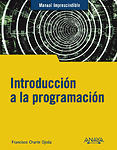
Francisco Charte Ojeda.
Introducción a la programación - Manual imprescindible
Anaya Multimedia, 2022.
[ Índice | ISBN: 978-84-415-4353-9 ] - [130]
-
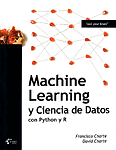
Francisco Charte Ojeda, David Charte Luque.
Machine Learning y Ciencia de Datos con Python y R
Krasis Consulting, 2021.
[ Índice | ISBN: 978-84-945822-5-7 ] - [129]
-
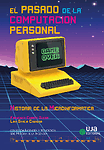
Francisco Charte Ojeda, Lina García Cabrera.
El pasado de la computación personal: historial de la microinformática - Ingeniería y Tecnología. Serie Historia de la Ingeniería
Universidad de Jaén, 2019.
[ Índice | ISBN: 978-84-9159-186-3 ] - [128]
-
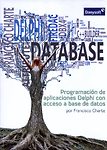
Francisco Charte Ojeda.
Programación de aplicaciones Delphi con acceso a bases de datos
Danysoft, 2016.
[ Índice ] - [127]
-

Francisco Charte Ojeda.
Excel 2016 - Guía práctica
Anaya Multimedia, 2016.
[ Índice | ISBN: 978-84-415-3800-9 ] - [126]
-
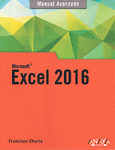
Francisco Charte Ojeda.
Excel 2016 - Manual avanzado
Anaya Multimedia, 2016.
[ Índice | ISBN: 978-84-415-3806-1 ] - [125]
-

Francisco Charte Ojeda.
Word 2016 - Manual imprescindible
Anaya Multimedia, 2016.
[ Índice | ISBN: 978-84-415-3816-0 ] - [124]
-
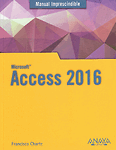
Francisco Charte Ojeda.
Access 2016 - Manual imprescindible
Anaya Multimedia, 2016.
[ Índice | ISBN: 978-84-415-3828-3 ] - [123]
-
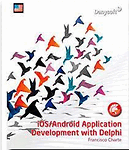
Francisco Charte Ojeda.
iOS/Android Application Development with Delphi.
Danysoft, 2015.
[ Índice | ISBN: 978-84-939910-8-1 ] - [122]
-
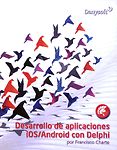
Francisco Charte Ojeda.
Desarrollo de aplicaciones iOS/Android con Delphi
Danysoft, 2014.
[ Índice | ISBN: 978-84-939910-7-4 ] - [121]
-

Francisco Charte Ojeda.
ASP.NET 4.5/MVC 4 - Manual imprescindible
Anaya Multimedia, 2014.
[ Índice | ISBN: 978-84-415-3452-0 ] - [120]
-
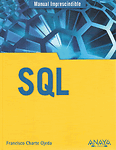
Francisco Charte Ojeda.
SQL - Manual imprescindible
Anaya Multimedia, 2014.
[ Índice | ISBN: 978-84-415-3609-8 ] - [119]
-

Francisco Charte Ojeda.
La guía de HTML5 Builder
Danysoft, 2013.
[ Índice | ISBN: 978-84-939910-4-3 ] - [118]
-
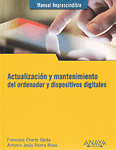
Francisco Charte Ojeda, Antonio Jesús Rivera Rivas.
Actualización y mantenimiento del ordenador personal y dispositivos digitales - Manual imprescindible
Anaya Multimedia, 2013.
[ Índice | ISBN: 978-84-415-3269-4 ] - [117]
-
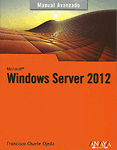
Francisco Charte Ojeda.
Windows Server 2012 - Manual avanzado
Anaya Multimedia, 2013.
[ Índice | ISBN: 978-84-415-3320-2 ] - [116]
-
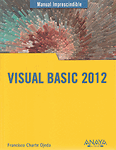
Francisco Charte Ojeda.
Visual Basic 2012 - Manual imprescindible
Anaya Multimedia, 2013.
[ Índice | ISBN: 978-84-415-3330-1 ] - [115]
-
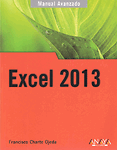
Francisco Charte Ojeda.
Excel 2013 - Manual avanzado
Anaya Multimedia, 2013.
[ Índice | ISBN: 978-84-415-3361-5 ] - [114]
-

Francisco Charte Ojeda.
Excel 2013 - Guía práctica
Anaya Multimedia, 2013.
[ Índice | ISBN: 978-84-415-3407-0 ] - [113]
-
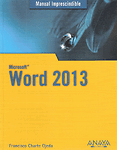
Francisco Charte Ojeda.
Word 2013 - Manual imprescindible
Anaya Multimedia, 2013.
[ Índice | ISBN: 978-84-415-3413-1 ] - [112]
-
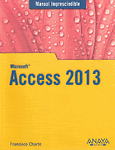
Francisco Charte Ojeda.
Access 2013 - Manual imprescindible
Anaya Multimedia, 2013.
[ Índice | ISBN: 978-84-415-3449-0 ] - [111]
-
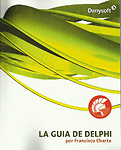
Francisco Charte Ojeda.
La guía de Delphi
Danysoft, 2012.
[ Índice | ISBN: 978-84-939910-1-2 ] - [110]
-
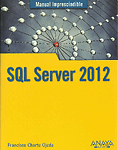
Francisco Charte Ojeda.
SQL Server 2012 - Manual imprescindible
Anaya Multimedia, 2012.
[ Índice | ISBN: 978-84-415-3219-9 ] - [109]
-
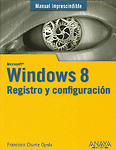
Francisco Charte Ojeda.
Windows 8 registro y configuración - Manual imprescindible
Anaya Multimedia, 2012.
[ Índice | ISBN: 978-84-415-3271-7 ] - [108]
-

Francisco Charte Ojeda.
El pasado de la computación personal. Historia de la microinformática
Universidad de Jaén, 2011.
[ Índice | ISBN: 978-84-8439-575-1 | Descargar ] - [107]
-

Francisco Charte Ojeda.
Windows 7 registro y configuración - Guía práctica
Anaya Multimedia, 2010.
[ Índice | ISBN: 978-84-415-2690-7 ] - [106]
-

Francisco Charte Ojeda.
Ubuntu - Guía práctica
Anaya Multimedia, 2010.
[ Índice | ISBN: 978-84-415-2721-8 ] - [105]
-

Francisco Charte Ojeda.
Visual Basic 2010 - Guía práctica
Anaya Multimedia, 2010.
[ Índice | ISBN: 978-84-415-2738-6 ] - [104]
-

Francisco Charte Ojeda.
ASP.NET 4.0 - Guía práctica
Anaya Multimedia, 2010.
[ Índice | ISBN: 978-84-415-2763-8 ] - [103]
-

Francisco Charte Ojeda.
Excel 2010 - Guía práctica
Anaya Multimedia, 2010.
[ Índice | ISBN: 978-84-415-2771-3 ] - [102]
-
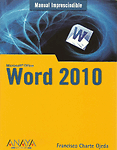
Francisco Charte Ojeda.
Word 2010 - Manual imprescindible
Anaya Multimedia, 2010.
[ Índice | ISBN: 978-84-415-2780-5 ] - [101]
-
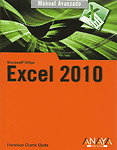
Francisco Charte Ojeda.
Excel 2010 - Manual avanzado
Anaya Multimedia, 2010.
[ Índice | ISBN: 978-84-415-2788-1 ] - [100]
-
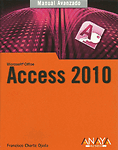
Francisco Charte Ojeda.
Access 2010 - Manual avanzado
Anaya Multimedia, 2010.
[ Índice | ISBN: 978-84-415-2800-0 ] - [99]
-
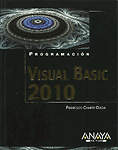
Francisco Charte Ojeda.
Visual Basic 2010 - Programación
Anaya Multimedia, 2010.
[ Índice | ISBN: 978-84-415-2813-0 ] - [98]
-

Francisco Charte Ojeda.
ASP.NET 3.5 - Guía práctica
Anaya Multimedia, 2009.
[ Índice | ISBN: 978-84-415-2502-3 ] - [97]
-
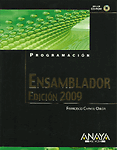
Francisco Charte Ojeda.
Ensamblador - Edición 2009 - Programación
Anaya Multimedia, 2009.
[ Índice | ISBN: 978-84-415-2511-5 ] - [96]
-

Francisco Charte Ojeda.
SQL Server 2008 - Guía práctica
Anaya Multimedia, 2009.
[ Índice | ISBN: 978-84-415-2525-2 ] - [95]
-

Francisco Charte Ojeda.
Lenguaje ensamblador - Guía práctica
Anaya Multimedia, 2009.
[ Índice | ISBN: 978-84-415-2549-8 ] - [94]
-
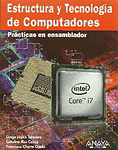
Diego López Talavera, Catalina Rus Casas, Francisco Charte Ojeda.
Estructura y tecnología de computadores: prácticas en ensamblador - Títulos especiales
Anaya Multimedia, 2009.
[ Índice | ISBN: 978-84-415-2606-8 ] - [93]
-

Francisco Charte Ojeda.
SQL - Guía práctica
Anaya Multimedia, 2009.
[ Índice | ISBN: 978-84-415-2608-2 ] - [92]
-

Francisco Charte Ojeda.
PHP 6 - Guía práctica
Anaya Multimedia, 2009.
[ Índice | ISBN: 978-84-415-2617-4 ] - [91]
-
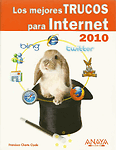
Francisco Charte Ojeda.
Los mejores trucos para Internet 2010 - Títulos especiales
Anaya Multimedia, 2009.
[ Índice | ISBN: 978-84-415-2663-1 ] - [90]
-

Francisco Charte Ojeda.
Cálculos estadísticos con Excel - Guía práctica
Anaya Multimedia, 2008.
[ Índice | ISBN: 978-84-415-2368-5 ] - [89]
-
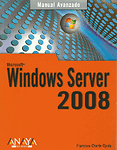
Francisco Charte Ojeda.
Windows Server 2008 - Manual avanzado
Anaya Multimedia, 2008.
[ Índice | ISBN: 978-84-415-2386-9 ] - [88]
-

Francisco Charte Ojeda.
Windows Server 2008 - Guía práctica
Anaya Multimedia, 2008.
[ Índice | ISBN: 978-84-415-2434-7 ] - [87]
-

Francisco Charte Ojeda.
Visual Basic 2008 - Guía práctica
Anaya Multimedia, 2008.
[ Índice | ISBN: 978-84-415-2445-3 ] - [86]
-

Francisco Charte Ojeda.
Visual Basic 2008 - Programación
Anaya Multimedia, 2008.
[ Índice | ISBN: 978-84-415-2477-4 ] - [85]
-

Francisco Charte Ojeda.
AJAX - Guía práctica
Anaya Multimedia, 2007.
[ Índice | ISBN: 978-84-415-2134-6 ] - [84]
-

Francisco Charte Ojeda.
Excel 2007 - Guía práctica
Anaya Multimedia, 2007.
[ Índice | ISBN: 978-84-415-2140-7 ] - [83]
-

Francisco Charte Ojeda.
Word 2007 - Manual imprescindible
Anaya Multimedia, 2007.
[ Índice | ISBN: 978-84-415-2169-8 ] - [82]
-
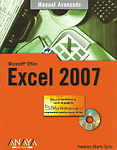
Francisco Charte Ojeda.
Excel 2007 - Manual avanzado
Anaya Multimedia, 2007.
[ Índice | ISBN: 978-84-415-2175-9 ] - [81]
-

Francisco Charte Ojeda.
Access 2007 - Manual avanzado
Anaya Multimedia, 2007.
[ Índice | ISBN: 978-84-415-2199-5 ] - [80]
-
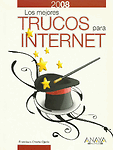
Francisco Charte Ojeda.
Los mejores trucos para Internet - Títulos especiales
Anaya Multimedia, 2007.
[ Índice | ISBN: 978-84-415-2300-5 ] - [79]
-
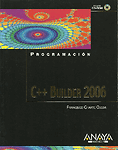
Francisco Charte Ojeda.
C++ Builder 2006 - Programación
Anaya Multimedia, 2006.
[ Índice | ISBN: 84-415-1988-9 ] - [78]
-

Francisco Charte Ojeda.
Delphi 2006 - Guía práctica
Anaya Multimedia, 2006.
[ Índice | ISBN: 84-415-1994-3 ] - [77]
-

Francisco Charte Ojeda.
Visual Basic 2005 - Guía práctica
Anaya Multimedia, 2006.
[ Índice | ISBN: 84-415-2015-1 ] - [76]
-

Francisco Charte Ojeda.
Visual Studio 2005 - Guía práctica
Anaya Multimedia, 2006.
[ Índice | ISBN: 84-415-2017-8 ] - [75]
-

Francisco Charte Ojeda.
SQL Server 2005 - Guía práctica
Anaya Multimedia, 2006.
[ Índice | ISBN: 84-415-2028-3 ] - [74]
-
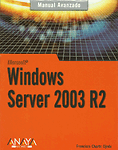
Francisco Charte Ojeda.
Windows Server 2003 R2 - Manual avanzado
Anaya Multimedia, 2006.
[ Índice | ISBN: 84-415-2043-7 ] - [73]
-

Francisco Charte Ojeda.
Visual C# 2005 - Guía práctica
Anaya Multimedia, 2006.
[ Índice | ISBN: 84-415-2083-6 ] - [72]
-

Francisco Charte Ojeda.
PHP 5 - Guía práctica
Anaya Multimedia, 2005.
[ Índice | ISBN: 84-415-1796-7 ] - [71]
-
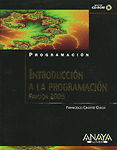
Francisco Charte Ojeda.
Introducción a la programación - Edición 2005 - Programación
Anaya Multimedia, 2005.
[ Índice | ISBN: 84-415-1804-1 ] - [70]
-

Francisco Charte Ojeda.
SQL - Guía práctica
Anaya Multimedia, 2005.
[ Índice | ISBN: 84-415-1915-3 ] - [69]
-
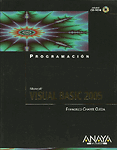
Francisco Charte Ojeda.
Visual Basic 2005 - Programación
Anaya Multimedia, 2005.
[ Índice | ISBN: 84-415-1926-9 ] - [68]
-
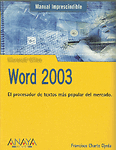
Francisco Charte Ojeda.
Word 2003 - Manual imprescindible
Anaya Multimedia, 2004.
[ Índice | ISBN: 84-415-1639-1 ] - [67]
-
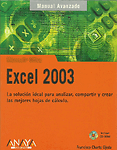
Francisco Charte Ojeda.
Excel 2003 - Manual avanzado
Anaya Multimedia, 2004.
[ Índice | ISBN: 84-415-1654-5 ] - [66]
-
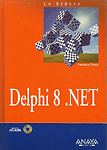
Francisco Charte Ojeda.
Delphi 8.Net - La biblia de
Anaya Multimedia, 2004.
[ Índice | ISBN: 84-415-1736-3 ] - [65]
-
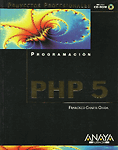
Francisco Charte Ojeda.
PHP 5 - Proyectos profesionales
Anaya Multimedia, 2004.
[ Índice | ISBN: 84-415-1770-3 ] - [64]
-
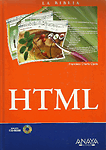
Francisco Charte Ojeda.
HTML - La biblia de
Anaya Multimedia, 2004.
[ Índice | ISBN: 84-415-1783-5 ] - [63]
-
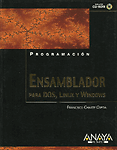
Francisco Charte Ojeda.
Ensamblador para DOS, Linux y Windows - Programación
Anaya Multimedia, 2003.
[ Índice | ISBN: 84-415-1482-8 ] - [62]
-
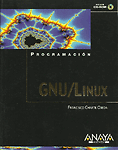
Francisco Charte Ojeda.
GNU/Linux - Programación
Anaya Multimedia, 2003.
[ Índice | ISBN: 84-415-1544-1 ] - [61]
-

Francisco Charte Ojeda.
Delphi 7 - Guía práctica
Anaya Multimedia, 2003.
[ Índice | ISBN: 84-415-1554-9 ] - [60]
-
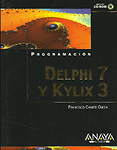
Francisco Charte Ojeda.
Delphi 7 y Kylix 3 - Programación
Anaya Multimedia, 2003.
[ Índice | ISBN: 84-415-1566-2 ] - [59]
-
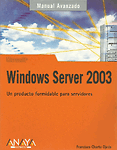
Francisco Charte Ojeda.
Windows Server 2003 - Manual avanzado
Anaya Multimedia, 2003.
[ Índice | ISBN: 84-415-1568-9 ] - [58]
-

Francisco Charte Ojeda.
Excel 2003 - Guía práctica
Anaya Multimedia, 2003.
[ Índice | ISBN: 84-415-1610-3 ] - [57]
-

Francisco Charte Ojeda.
JBuilder 7 - Guía práctica
Anaya Multimedia, 2002.
[ Índice | ISBN: 84-415-1324-4 ] - [56]
-
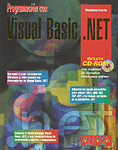
Francisco Charte Ojeda.
Visual Basic .NET - Programación
Anaya Multimedia, 2002.
[ Índice | ISBN: 84-415-1351-1 ] - [55]
-

Francisco Charte Ojeda.
Bases de datos con Visual Basic .NET - Programación
Anaya Multimedia, 2002.
[ Índice | ISBN: 84-415-1375-9 ] - [54]
-

Francisco Charte Ojeda, Jorge Serrano Pérez.
Visual Studio .NET - Programación
Anaya Multimedia, 2002.
[ Índice | ISBN: 84-415-1376-7 ] - [53]
-
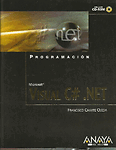
Francisco Charte Ojeda.
Visual C# .NET - Programación
Anaya Multimedia, 2002.
[ Índice | ISBN: 84-415-1392-9 ] - [52]
-

Francisco Charte Ojeda.
Visual C# .NET - Guía práctica
Anaya Multimedia, 2002.
[ Índice | ISBN: 84-415-1414-3 ] - [51]
-

Francisco Charte Ojeda.
Kylix - Guía práctica
Anaya Multimedia, 2001.
[ Índice | ISBN: 84-415-1132-2 ] - [50]
-

Francisco Charte Ojeda.
SQL Server 2000 - Guía práctica
Anaya Multimedia, 2001.
[ Índice | ISBN: 84-415-1136-5 ] - [49]
-
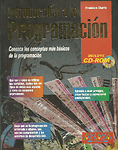
Francisco Charte Ojeda.
Introducción a la programación - Programación
Anaya Multimedia, 2001.
[ Índice | ISBN: 84-415-1145-4 ] - [48]
-

Francisco Charte Ojeda.
SQL Server 2000 - Guía práctica USA
Anaya Multimedia, 2001.
[ Índice | ISBN: 84-415-1175-6 ] - [47]
-

Francisco Charte Ojeda, María Jesús Luque Cañada.
Excel 2002 - Guía práctica
Anaya Multimedia, 2001.
[ Índice | ISBN: 84-415-1202-7 ] - [46]
-
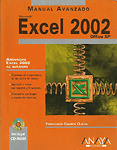
Francisco Charte Ojeda.
Excel 2002 - Manual avanzado
Anaya Multimedia, 2001.
[ Índice | ISBN: 84-415-1230-2 ] - [45]
-

Francisco Charte Ojeda, María Jesús Luque Cañada.
Excel 2002 - Guía práctica USA
Anaya Multimedia, 2001.
[ Índice | ISBN: 84-415-1239-6 ] - [44]
-

Francisco Charte Ojeda.
Delphi 6 - Guía práctica USA
Anaya Multimedia, 2001.
[ Índice | ISBN: 84-415-1255-8 ] - [43]
-
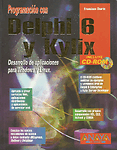
Francisco Charte Ojeda.
Delphi 6 y Kylix - Programación
Anaya Multimedia, 2001.
[ Índice | ISBN: 84-415-1261-2 ] - [42]
-

Francisco Charte Ojeda.
Visual Basic .NET - Guía práctica
Anaya Multimedia, 2001.
[ Índice | ISBN: 84-415-1290-6 ] - [41]
-

Francisco Charte Ojeda.
Visual Studio .NET - Guía práctica
Anaya Multimedia, 2001.
[ Índice | ISBN: 84-415-1291-4 ] - [40]
-

Francisco Charte Ojeda.
Delphi 5 - Programación
Anaya Multimedia, 2000.
[ Índice | ISBN: 84-415-0967-0 ] - [39]
-
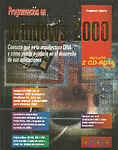
Francisco Charte Ojeda.
Programación en Windows 2000 - Programación
Anaya Multimedia, 2000.
[ Índice | ISBN: 84-415-1017-2 ] - [38]
-

Francisco Charte Ojeda.
C++ Builder 5 - Guía práctica
Anaya Multimedia, 2000.
[ Índice | ISBN: 84-415-1021-0 ] - [37]
-
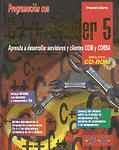
Francisco Charte Ojeda.
C++ Builder 5 - Programación
Anaya Multimedia, 2000.
[ Índice | ISBN: 84-415-1046-6 ] - [36]
-

Francisco Charte Ojeda.
Corel Linux - Guía práctica
Anaya Multimedia, 2000.
[ Índice | ISBN: 84-415-1047-4 ] - [35]
-

Francisco Charte Ojeda.
C# y Microsoft .NET - Guía práctica
Anaya Multimedia, 2000.
[ Índice | ISBN: 84-415-1099-7 ] - [34]
-

Francisco Charte Ojeda.
Delphi 5 - Guía práctica
Anaya Multimedia, 2000.
[ Índice | ISBN: 84-415-0957-3 ] - [33]
-
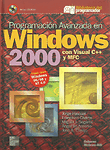
Jorge Pascual Sancho, Francisco Charte Ojeda.
Programación avanzada en Windows 2000
McGraw-Hill Interamericana de España, 2000.
[ Índice | ISBN: 84-481-2532-0 ] - [32]
-

Francisco Charte Ojeda.
Visual Basic 6 - Guía práctica
Anaya Multimedia, 1999.
[ Índice | ISBN: 84-415-0802-X ] - [31]
-

Francisco Charte Ojeda.
Cómo programar con Visual Basic, actualizado a la versión 6 - Informática para torpes
Anaya Multimedia, 1999.
[ Índice | ISBN: 84-415-0808-9 ] - [30]
-

Francisco Charte Ojeda.
Programación avanzada en Windows 98 - Programación
Anaya Multimedia, 1999.
[ Índice | ISBN: 84-415-0832-1 ] - [29]
-
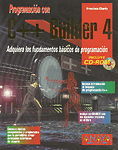
Francisco Charte Ojeda.
Programación con C++ Builder 4 - Programación
Anaya Multimedia, 1999.
[ Índice | ISBN: 84-415-0841-0 ] - [28]
-
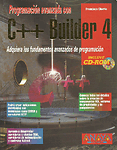
Francisco Charte Ojeda.
Programación avanzada con C++ Builder 4 - Programación
Anaya Multimedia, 1999.
[ Índice | ISBN: 84-415-0860-7 ] - [27]
-

Francisco Charte Ojeda, María Jesús Luque Cañada.
Excel 2000 - Guía práctica USA
Anaya Multimedia, 1999.
[ Índice | ISBN: 84-415-1170-5 ] - [26]
-

Francisco Charte Ojeda, María Jesús Luque Cañada.
Excel 2000 - Guía práctica
Anaya Multimedia, 1999.
[ Índice | ISBN: 84-415-0898-4 ] - [25]
-

Francisco Charte Ojeda.
C++ Builder 4 - Guía práctica
Anaya Multimedia, 1999.
[ Índice | ISBN: 84-415-0902-6 ] - [24]
-
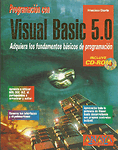
Francisco Charte Ojeda.
Programación con Visual Basic 5.0
Anaya Multimedia, 1998.
[ Índice | ISBN: 84-415-0222-6 ] - [23]
-

Francisco Charte Ojeda.
Visual Basic 5 - Guía práctica
Anaya Multimedia, 1998.
[ Índice | ISBN: 84-415-0236-6 ] - [22]
-
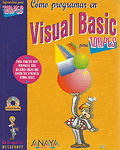
Francisco Charte Ojeda.
Cómo programar con Visual Basic - Informática para torpes
Anaya Multimedia, 1998.
[ Índice | ISBN: 84-415-0369-9 ] - [21]
-
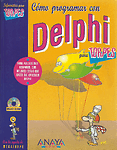
Francisco Charte Ojeda.
Cómo programar con Delphi - Informática para torpes
Anaya Multimedia, 1998.
[ Índice | ISBN: 84-415-0376-1 ] - [20]
-
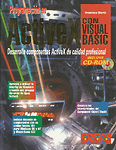
Francisco Charte Ojeda.
Programación ActiveX con Visual Basic - Programación
Anaya Multimedia, 1998.
[ Índice | ISBN: 84-415-0480-6 ] - [19]
-

Francisco Charte Ojeda.
C++ Builder 3 - Guía práctica
Anaya Multimedia, 1998.
[ Índice | ISBN: 84-415-0514-4 ] - [18]
-

Francisco Charte Ojeda.
Delphi 4 - Guía práctica
Anaya Multimedia, 1998.
[ Índice | ISBN: 84-415-0584-5 ] - [17]
-
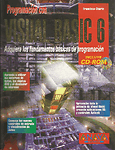
Francisco Charte Ojeda.
Programación con Visual Basic 6 - Programación
Anaya Multimedia, 1998.
[ Índice | ISBN: 84-415-0590-X ] - [16]
-
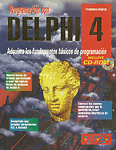
Francisco Charte Ojeda.
Programación con Delphi 4 - Programación
Anaya Multimedia, 1998.
[ Índice | ISBN: 84-415-0745-7 ] - [15]
-

Francisco Charte Ojeda.
Programación profesional con Visual Basic 4 - Programación
Anaya Multimedia, 1997.
[ Índice | ISBN: 84-415-0079-7 ] - [14]
-

Francisco Charte Ojeda.
Programación profesional con C++ Builder
Anaya Multimedia, 1997.
[ Índice | ISBN: 84-415-0203-X ] - [13]
-
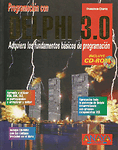
Francisco Charte Ojeda.
Programación con Delphi 3
Anaya Multimedia, 1997.
[ Índice | ISBN: 84-415-0214-5 ] - [12]
-

Francisco Charte Ojeda.
Delphi 3.0
Anaya Multimedia, 1997.
[ Índice | ISBN: 84-415-0264-1 ] - [11]
-
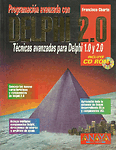
Francisco Charte Ojeda.
Programación avanzada con Delphi 2.0
Anaya Multimedia, 1996.
[ Índice | ISBN: 84-7614-915-8 ] - [10]
-

Francisco Charte Ojeda.
Delphi 2.0 - Guía práctica
Anaya Multimedia, 1996.
[ Índice | ISBN: 84-7614-931-X ] - [9]
-
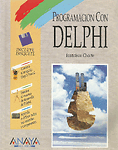
Francisco Charte Ojeda.
Programación con Delphi - Informática personal-profesional
Anaya Multimedia, 1996.
[ Índice | ISBN: 84-7614-825-9 ] - [8]
-

Francisco Charte Ojeda.
Visual Basic 4.0 - Guía práctica
Anaya Multimedia, 1996.
[ Índice | ISBN: 84-7614-878-X ] - [7]
-
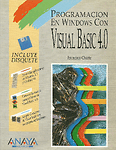
Francisco Charte Ojeda.
Programación en Windows con Visual Basic 4.0 -Informática personal-profesional
Anaya Multimedia, 1996.
[ Índice | ISBN: 84-7614-762-7 ] - [6]
-
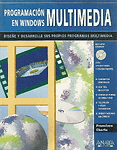
Francisco Charte Ojeda.
Programación multimedia en Windows -Informática personal-profesional
Anaya Multimedia, 1994.
[ Índice | ISBN: 84-7614-625-6 ] - [5]
-

Francisco Charte Ojeda.
Programación orientada a objetos con Borland C++ -Informática personal-profesional
Anaya Multimedia, 1993.
[ Índice | ISBN: 84-7614-480-6 ] - [4]
-
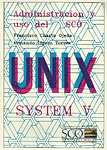
Francisco Charte Ojeda.
Administración y uso del Santa Cruz Operation Unix System V
A. Ligero Torres, 1991.
[ Índice | ISBN: 84-604-0758-6 ] - [3]
-
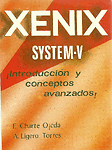
Francisco Charte Ojeda.
Xenix System V
A. Ligero Torres, 1988.
[ Índice | ISBN: 84-404-3205-4 ] - [2]
-
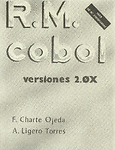
Francisco Charte Ojeda.
COBOL, el libro del programador
A. Ligero Torres, 1987.
[ Índice | ISBN: 84-398-8843-0 ] - [1]
-
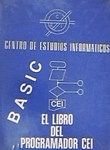
Francisco Charte Ojeda.
BASIC, el libro del programador
A. Ligero Torres, 1987.
[ Índice | ISBN: 84-398-9457-0 ]
Artículos divulgativos / educativos
- [1]
-
Francisco Charte.
CUDA. Plataforma de programación basada en la gráfica.
PC Actual, 218:94-96, 8 2009. [ bib ] - [2]
-
Francisco Charte.
NetBeans 6.5. Un entorno polifacético.
PC Actual, 217:86-88, 7 2009. [ bib ] - [3]
-
Francisco Charte.
Silverlight 2, etorno de desarrollo .NET multiplataforma.
PC Actual, 216:96-98, 6 2009. [ bib ] - [4]
-
Francisco Charte.
Windows Azure. Un sistema para la nube.
PC Actual, 215:110-112, 5 2009. [ bib ] - [5]
-
Francisco Charte.
Adobe AIR. Entorno de ejecución de aplicaciones RIA.
PC Actual, 213:116-118, 3 2009. [ bib ] - [6]
-
Francisco Charte.
Prevención en el desarrollo de software. Programación con
garantías.
PC Actual, 213:50-51, 3 2009. [ bib ] - [7]
-
Francisco Charte.
HTML 5. El próximo estándar web.
PC Actual, 214:104-106, 4 2009. [ bib ] - [8]
-
Francisco Charte.
MonoDevelop versión 1.0. Libre y multiplataforma.
PC Actual, 211:114-116, 10 2008. [ bib ] - [9]
-
Francisco Charte.
Acceso a las bases de datos.
Personal Computer & Internet, 67:130-135, 8 2008. [ bib ] - [10]
-
Francisco Charte.
Diseño web con Visual Web Developer.
Personal Computer & Internet, 66:168-173, 7 2008. [ bib ] - [11]
-
Francisco Charte.
Microsoft Visual Studio Team System 2008. Un sistema muy flexible.
PC Actual, 209:124-126, 7 2008. [ bib ] - [12]
-
Francisco Charte.
Los lenguajes de Visual Studio.
Personal Computer & Internet, 65:170-177, 6 2008. [ bib ] - [13]
-
Francisco Charte.
SQL Server 2008. Renovada gestión de datos.
PC Actual, 208:124-127, 6 2008. [ bib ] - [14]
-
Francisco Charte.
Windows Server 2008. El lanzamiento del año.
PC Actual, 207:111-113, 5 2008. [ bib ] - [15]
-
Francisco Charte.
Google Android. Aires de cambio en el móvil.
PC Actual, 204:112-115, 2 2008. [ bib ] - [16]
-
Francisco Charte.
C++ Builder 2007 R2 Enterprise. Herramienta de aplicaciones.
PC Actual, 201:136-139, 11 2007. [ bib ] - [17]
-
Francisco Charte.
Microsoft Popfly. Diseña tus propios mashups.
PC Actual, 203:140-142, 11 2007. [ bib ] - [18]
-
Francisco Charte.
Adobe Flash vs Microsoft Silverlight. Programa desde el navegador.
PC Actual, 202:147-149, 10 2007. [ bib ] - [19]
-
Francisco Charte.
Generación de gráficos.
Personal Computer & Internet, 55:162-167, 10 2007. [ bib ] - [20]
-
Francisco Charte.
Una alternativa al formato Flash.
Personal Computer & Internet, 55:150-153, 10 2007. [ bib ] - [21]
-
Francisco Charte.
Visual Studio 2008 Beta 2 (y II).
Sólo Programadores, 153:26-31, 10 2007. [ bib ] - [22]
-
Francisco Charte.
Almacenamiento de datos.
Personal Computer & Internet, 54:182-187, 9 2007. [ bib ] - [23]
-
Francisco Charte.
Proceso de formularios con PHP.
Personal Computer & Internet, 53:220-225, 8 2007. [ bib ] - [24]
-
Francisco Charte.
Mejora tu sitio web con PHP.
Personal Computer & Internet, 52:194-199, 7 2007. [ bib ] - [25]
-
Francisco Charte.
Microsoft Expression Web. Alternativa al diseño de webs.
PC Actual, 197:117-119, 6 2007. [ bib ] - [26]
-
Francisco Charte.
Yahoo! Pipes. Diseña tus propios canales de contenidos.
Personal Computer & Internet, 51:204-207, 6 2007. [ bib ] - [27]
-
Francisco Charte.
Cómo aprovechar PHP en tus páginas. Incluye un calendario y
un contador en tu web.
Personal Computer & Internet, 50:208-211, 5 2007. [ bib ] - [28]
-
Francisco Charte.
Java SE 6. Nueva edición de escritorio.
PC Actual, 196:113-115, 5 2007. [ bib ] - [29]
-
Francisco Charte.
La API de Windows Vista. El nuevo sistema operativo amplía la
capa de servicios para aplicaciones.
PC Actual, 195:132-134, 4 2007. [ bib ] - [30]
-
Francisco Charte.
Visual Studio Orcas. Un entorno de desarrollo futuro.
PC Actual, 194:181-183, 3 2007. [ bib ] - [31]
-
Francisco Charte.
AJAX: lógica en el cliente.
PC Actual, 193:164-167, 2 2007. [ bib ] - [32]
-
Francisco Charte.
AJAX: los elementos del servidor.
PC Actual, 192:148-151, 1 2007. [ bib ] - [33]
-
Francisco Charte.
Eclipse Europa . Un entorno multipropósito.
PC Actual, 199:124-127, 11 2007. [ bib ] - [34]
-
Francisco Charte.
AJAX: diseñamos la interfaz.
PC Actual, 191:170-174, 12 2006. [ bib ] - [35]
-
Francisco Charte.
AJAX: partimos de los fundamentos.
PC Actual, 190:170-174, 11 2006. [ bib ] - [36]
-
Francisco Charte.
Borland vuelve a sus orígenes. Herramientas de desarrollo
gratuitas destinadas a programadores noveles.
PC Actual, 190:110-112, 11 2006. [ bib ] - [37]
-
Francisco Charte.
Visual Studio 2005 ediciones Express (II).
Sólo Programadores, 139:31-38, 6 2006. [ bib ] - [38]
-
Francisco Charte.
Novedades en los lenguajes. Visual Basic, C# y C++ evolucionan de
forma imparable bajo el paraguas .NET 2.0.
PC Actual, 184:131-134, 4 2006. [ bib ] - [39]
-
Francisco Charte.
Plataforma .NET 2.0. Servicios nuevos y eficaces.
PC Actual, 185:122-126, 3 2006. [ bib ] - [40]
-
Francisco Charte.
Llega la renovación de MySQL.
PC Actual, 182:127-129, 2 2006. [ bib ] - [41]
-
Francisco Charte.
Microsoft PDF 2005. Novedades para programadores.
PC Actual, 181:150-154, 1 2006. [ bib ] - [42]
-
Francisco Charte.
La interfaz de Google. Cómo aprovechar las características
de Google desde aplicaciones propias.
PC Actual, 180:214-219, 12 2005. [ bib ] - [43]
-
Francisco Charte.
Delphi y C++ Builder renovados. Borland presenta un producto que
compite directamente con Visual Studio.
PC Actual, 179:144-146, 11 2005. [ bib ] - [44]
-
Francisco Charte.
La familia Visual Studio 2005.
PC Actual, 175:167-172, 6 2005. [ bib ] - [45]
-
Francisco Charte.
Visual Studio 2005 Ediciones Express (I).
Sólo Programadores, 138:31-39, 6 2005. [ bib ] - [46]
-
Francisco Charte.
ASP.NET: Páginas maestras.
Sólo Programadores, 125:65-72, 5 2005. [ bib ] - [47]
-
Francisco Charte.
SQL Server 2005. Yukon en la línea de salida.
PC Actual, 174:132-134, 5 2005. [ bib ] - [48]
-
Francisco Charte.
Desarrollo de controles web.
Sólo Programadores, 124:57-64, 4 2005. [ bib ] - [49]
-
Francisco Charte.
Visual Studio 2005 Team System. La caja de herramientas de MS.
PC Actual, 173:172-174, 4 2005. [ bib ] - [50]
-
Francisco Charte.
Servicios web.
Sólo Programadores, 123:49-56, 3 2005. [ bib ] - [51]
-
Francisco Charte.
Un Visual Basic para Linux. Gambas 1.0 es la unión de un
intérprete y un compilador BASIC con entorno de desarrollo.
PC Actual, 172:144-146, 3 2005. [ bib ] - [52]
-
Francisco Charte.
Llega un entorno combinado. Object Pascal, C#, Win32 y .NET se
aúnan en este magnífico producto.
PC Actual, 171:119-121, 2 2005. [ bib ] - [53]
-
Francisco Charte.
Acceso a datos.
Sólo Programadores, 121:33-40, 1 2005. [ bib ] - [54]
-
Francisco Charte.
Desarrollo con JBuilder 2005. El entorno de desarrollo Java más
polifacético y extendido se pone al día.
PC Actual, 170:152-154, 1 2005. [ bib ] - [55]
-
Francisco Charte.
Proceso de formularios con ASP.NET.
Sólo Programadores, 120:25-32, 1 2005. [ bib ] - [56]
-
Francisco Charte.
Diseño de interfaces.
Sólo Programadores, 119:17-24, 12 2004. [ bib ] - [57]
-
Francisco Charte.
El camaleónico Mono 1.0. Cómo desarrollar aplicaciones para
los sistemas operativos más difundidos.
PC Actual, 169:174-176, 12 2004. [ bib ] - [58]
-
Francisco Charte.
Herramientas disponibles.
Sólo Programadores, 118:9-16, 11 2004. [ bib ] - [59]
-
Francisco Charte.
J2SE 5.0. La mayor renovación del lenguaje Java.
PC Actual, 168:143-145, 11 2004. [ bib ] - [60]
-
Francisco Charte.
Introducción a ASP.NET.
Sólo Programadores, 117:1-8, 10 2004. [ bib ] - [61]
-
Francisco Charte.
Visual Studio 2005 CTP March 2004 (y II).
Sólo Programadores, 115:22-24, 10 2004. [ bib ] - [62]
-
Francisco Charte.
Novedades en C# 2.0 (I).
Sólo Programadores, 112:22-25, 7 2004. [ bib ] - [63]
-
Francisco Charte.
Punteros y otros elementos no seguros.
Sólo Programadores, 112:57-64, 7 2004. [ bib ] - [64]
-
Francisco Charte.
Visual Studio 2005 CTP March 2004 (I).
Sólo Programadores, 114:36-39, 7 2004. [ bib ] - [65]
-
Francisco Charte.
Visual Studio 2005 CTP. Revisión mayor.
PC Actual, 165:124-126, 7 2004. [ bib ] - [66]
-
Francisco Charte.
Atributos en Visual C# .NET.
Sólo Programadores, 111:49-56, 6 2004. [ bib ] - [67]
-
Francisco Charte.
Cambios sufridos por Object Pascal en Delphi 8 .NET.
dotNetManía, 5:40-43, 6 2004. [ bib ] - [68]
-
Francisco Charte.
Novedades en C# 2.0 (y II).
Sólo Programadores, 113:30-32, 6 2004. [ bib ] - [69]
-
Francisco Charte.
Propiedades, eventos y delegados.
Sólo Programadores, 110:41-48, 5 2004. [ bib ] - [70]
-
Francisco Charte.
Estructuración del código.
Sólo Programadores, 109:33-40, 4 2004. [ bib ] - [71]
-
Francisco Charte.
J2SE 1.5 beta 1. El avance del felino.
PC Actual, 162:132-134, 4 2004. [ bib ] - [72]
-
Francisco Charte.
Acceso a bases de datos en Delphi 8 .NET.
dotNetManía, 2:42-45, 3 2004. [ bib ] - [73]
-
Francisco Charte.
Un sitio dinámico. CGI, páginas de servidor y otras
soluciones para animar nuestra web.
PC Actual, 161:70-74, 3 2004. [ bib ] - [74]
-
Francisco Charte.
Variables, tipos, operadores y expresiones.
Sólo Programadores, 108:25-32, 3 2004. [ bib ] - [75]
-
Francisco Charte.
De Everett a Orcas, pasando por Whidbey.
dotNetManía, 1:36-42, 2 2004. [ bib ] - [76]
-
Francisco Charte.
Estructura general.
Sólo Programadores, 107:17-24, 2 2004. [ bib ] - [77]
-
Francisco Charte.
Herramientas de desarrollo. Borland se renueva.
PC Actual, 160:130-134, 2 2004. [ bib ] - [78]
-
Francisco Charte.
C# 2.0.Alcanza su madurez.
PC Actual, 159:136-139, 1 2004. [ bib ] - [79]
-
Francisco Charte.
El compilador de C#.
Sólo Programadores, 106:9-16, 1 2004. [ bib ] - [80]
-
Francisco Charte.
Introducción a Visual C#.NET.
Sólo Programadores, 105:1-8, 12 2003. [ bib ] - [81]
-
Francisco Charte.
Bases de datos. Información en orden.
PC Actual, 157:144-154, 11 2003. [ bib ] - [82]
-
Francisco Charte.
PHP 5 beta 1. Lenguaje para la Red.
PC Actual, 156:146-148, 10 2003. [ bib ] - [83]
-
Francisco Charte.
Servicios Windows.
Sólo Programadores, 103:57-64, 10 2003. [ bib ] - [84]
-
Francisco Charte.
Visual Studio .NET Tools for Office. Desarrollo ofimático.
PC Actual, 156:150-151, 10 2003. [ bib ] - [85]
-
Francisco Charte.
Borland JBuilder 9. Integración segura.
PC Actual, 155:138-140, 9 2003. [ bib ] - [86]
-
Francisco Charte.
Microsoft Visual FoxPro 8. Renovación completa.
PC Actual, 154:138-142, 7 2003. [ bib ] - [87]
-
Francisco Charte.
Borland C# Builder. Competencia leal.
PC Actual, 153:176-180, 6 2003. [ bib ] - [88]
-
Francisco Charte.
Visual Studio .NET. Novedades en la utilidad de desarrollo.
PC Actual, 152:136-142, 5 2003. [ bib ] - [89]
-
Francisco Charte.
Windows 2003 Server para desarrolladores. Novedades para el
programador en el más reciente sistema de Microsoft.
PC Actual, 151:144-145, 4 2003. [ bib ] - [90]
-
Francisco Charte.
Servicios Java. La plataforma de Sun lucha por la Web con J2EE 1.4.
WindowsTi Magazine, 72:18-19, 2 2003. [ bib ] - [91]
-
Francisco Charte.
El final de Windows 9x. Todas las versiones de Windows comparten ya
núcleo.
WindowsTi Magazine, 71:18-19, 1 2003. [ bib ] - [92]
-
Francisco Charte.
Borland .NET. Delphi.NET estará disponible en un entorno
conjunto con otros lenguajes.
WindowsTi Magazine, 70:52-53, 12 2002. [ bib ] - [93]
-
Francisco Charte.
Roadmap de VS .NET.
WindowsTi Magazine, 69:52-53, 11 2002. [ bib ] - [94]
-
Francisco Charte.
Hacia la informática de gama alta.
WindowsTi Magazine, 68:26-27, 10 2002. [ bib ] - [95]
-
Francisco Charte.
Borland InterBase 6.5.
Programación Actual, 59:51-52, 9 2002. [ bib ] - [96]
-
Francisco Charte.
WebService.TechEd.NET.
WindowsTi Magazine, 67:28-29, 9 2002. [ bib ] - [97]
-
Francisco Charte.
Aplicaciones móviles.
Sólo Programadores, 101:41-48, 8 2002. [ bib ] - [98]
-
Francisco Charte.
Acceso a datos en Visual Basic .NET.
Sólo Programadores, 102:49-56, 7 2002. [ bib ] - [99]
-
Francisco Charte.
Servicios web con Visual Basic.
Sólo Programadores, 100:33-40, 7 2002. [ bib ] - [100]
-
Francisco Charte.
Aplicaciones Windows.
Sólo Programadores, 98:17-24, 6 2002. [ bib ] - [101]
-
Francisco Charte.
Borland JBuilder 6.
Programación Actual, 57:24-28, 6 2002. [ bib ] - [102]
-
Francisco Charte.
El sistema es la Base.
WindowsTi Magazine, 65:26-27, 6 2002. [ bib ] - [103]
-
Francisco Charte.
El lenguaje Visual Basic .NET.
Sólo Programadores, 97:9-16, 5 2002. [ bib ] - [104]
-
Francisco Charte.
El negocio está en el servidor.
WindowsTi Magazine, 64:24-25, 5 2002. [ bib ] - [105]
-
Francisco Charte.
Aplicaciones web.
Sólo Programadores, 95:25-32, 4 2002. [ bib ] - [106]
-
Francisco Charte.
Borland Kylix 2.
Programación Actual, 55:19-28, 4 2002. [ bib ] - [107]
-
Francisco Charte.
Introducción a Visual Basic .NET.
Sólo Programadores, 96:1-8, 4 2002. [ bib ] - [108]
-
Francisco Charte.
Programación eXtrema.
WindowsTi Magazine, 63:23-24, 4 2002. [ bib ] - [109]
-
Francisco Charte.
El retorno de Borland.
WindowsTi Magazine, 62:22-23, 3 2002. [ bib ] - [110]
-
Francisco Charte.
Sun Forte for Java 3.0.
Programación Actual, 54:30-32, 3 2002. [ bib ] - [111]
-
Francisco Charte.
El desarrollo que viene.
WindowsTi Magazine, 61:6-8, 2 2002. [ bib ] - [112]
-
Francisco Charte.
La plataforma Microsoft .NET.
Programación Actual, 52:41-45, 1 2002. [ bib ] - [113]
-
Francisco Charte.
Los lenguajes .NET.
Programación Actual, 52:46-50, 1 2002. [ bib ] - [114]
-
Francisco Charte.
Microsoft Visual Studio .NET.
Programación Actual, 52:36-40, 1 2002. [ bib ] - [115]
-
Francisco Charte.
Visual Studio .NET Solución global de desarrollo.
Dr. Dobb's, 2:64-68, 2 2002. [ bib ] - [116]
-
Francisco Charte.
Borland Delphi 6 Enterprise (Gamma).
PC World, 178:129-130, 7 2001. [ bib ] - [117]
-
Francisco Charte.
Rincón del programador. 8, 16, 32 y 64.
PC World, 178:292-293, 7 2001. [ bib ] - [118]
-
Francisco Charte.
Visual Studio .NET beta 2.
PC World, 178:148-149, 7 2001. [ bib ] - [119]
-
Francisco Charte.
Rincón del programador. Algo se mueve en el mundo de los datos.
PC World, 177:211-218, 6 2001. [ bib ] - [120]
-
Francisco Charte.
Informática móvil. Desarrollos para Psion.
PC World, 176:239-244, 5 2001. [ bib ] - [121]
-
Francisco Charte.
Rincón del programador. Un mundo de servicios en la Web.
PC World, 176:278-279, 5 2001. [ bib ] - [122]
-
Francisco Charte.
Informática móvil. Desarrollos para Palm.
PC World, 175:237-244, 4 2001. [ bib ] - [123]
-
Francisco Charte.
Rincón del programador. Java y la preservación de nuestras
inversiones.
PC World, 175:280-281, 4 2001. [ bib ] - [124]
-
Francisco Charte.
Acceso a bases de datos con Kylix.
PC World, 174:253-258, 3 2001. [ bib ] - [125]
-
Francisco Charte.
Informática móvil. Microsoft eMbedded Visual Tools.
PC World, 174:278-286, 3 2001. [ bib ] - [126]
-
Francisco Charte.
Introducción a C#.
PC World, 174:242-250, 3 2001. [ bib ] - [127]
-
Francisco Charte.
Rincón del programador. La informática real.
PC World, 174:320-321, 3 2001. [ bib ] - [128]
-
Francisco Charte.
Arquitectura de Kylix.
Mundo Linux, 29:26-29, 2 2001. [ bib ] - [129]
-
Francisco Charte.
Informática móvil. Psion y EPOC.
PC World, 173:252-258, 2 2001. [ bib ] - [130]
-
Francisco Charte.
Rincón del programador. De servidores de aplicaciones y J2EE.
PC World, 173:276-277, 2 2001. [ bib ] - [131]
-
Francisco Charte.
Informática móvil. La plataforma Palm.
PC World, 172:304-314, 1 2001. [ bib ] - [132]
-
Francisco Charte.
Rincón del programador. Feliz herramienta nueva.
PC World, 172:326-327, 1 2001. [ bib ] - [133]
-
Francisco Charte.
Visual Studio .NET beta 1.
PC World, 172:266-276, 1 2001. [ bib ] - [134]
-
Francisco Charte.
Borland Kylix. Primera versión del conocido entorno de
desarrollo RAD Borland Delphi para el sistema operativo Linux.
PC World, 171:146-148, 12 2000. [ bib ] - [135]
-
Francisco Charte.
Informática móvil. La plataforma Pocket PC.
PC World, 171:340-350, 12 2000. [ bib ] - [136]
-
Francisco Charte.
Rincón del programador. La década prodigiosa retorna con
fuerza.
PC World, 171:368-369, 12 2000. [ bib ] - [137]
-
Francisco Charte.
Informática móvil. De Palms, Pockets y otros.
PC World, 170:362-369, 11 2000. [ bib ] - [138]
-
Francisco Charte.
Microsoft Visual Basic.NET.
PC World, 170:320-328, 11 2000. [ bib ] - [139]
-
Francisco Charte.
Rincón del programador. Usuarios y programadores.
PC World, 170:384-385, 11 2000. [ bib ] - [140]
-
Francisco Charte.
Borland JBuilder 4 Enterprise (FT4).
PC World, 169:145-146, 10 2000. [ bib ] - [141]
-
Francisco Charte.
Compaq iPAQ H3600 Pocket PC.
PC World, 169:120-122, 10 2000. [ bib ] - [142]
-
Francisco Charte.
El PC como centro de diversión y entretenimiento. Cómo
convertir fácilmente su PC en la máquina de sus sueños.
PC World, 169:174-189, 10 2000. [ bib ] - [143]
-
Francisco Charte.
La plataforma Microsoft .NET. Microsoft apuesta su futuro en .NET.
PC World, 169:240-248, 10 2000. [ bib ] - [144]
-
Francisco Charte.
Rincón del programador. El cambio es la única constante.
PC World, 169:296-297, 10 2000. [ bib ] - [145]
-
Francisco Charte.
DirectDraw. Fondos y profundidad.
PC World, 168:282-291, 9 2000. [ bib ] - [146]
-
Francisco Charte.
PacketShaper. Cómo mejorar la Calidad de Servicio (QoS) de una
red.
PC World, 168:259-261, 9 2000. [ bib ] - [147]
-
Francisco Charte.
Rincón del programador. Nuevos dispositivos, lenguajes y
estándares.
PC World, 168:294-295, 9 2000. [ bib ] - [148]
-
Francisco Charte.
DirectDraw. Selección del dispositivo de salida.
PC World, 166:352-363, 6 2000. [ bib ] - [149]
-
Francisco Charte.
NTFS 2000. El nuevo sistema de archivos de Windows 2000.
PC World, 166:282-290, 6 2000. [ bib ] - [150]
-
Francisco Charte.
Rincón del programador. Productividad versus eficiencia.
PC World, 166:376-377, 6 2000. [ bib ] - [151]
-
Francisco Charte.
Un nuevo estándar para la web: HTML + XML = XHTML.
PC World, 166:272-280, 6 2000. [ bib ] - [152]
-
Francisco Charte.
C++ Builder 5 mejora el desarrollo de proyectos.
PC World, 165:258-268, 5 2000. [ bib ] - [153]
-
Francisco Charte.
DirectX y DirectDraw.
PC World, 165:308-314, 5 2000. [ bib ] - [154]
-
Francisco Charte.
Rincón del programador. La plataforma es La Red.
PC World, 165:328-329, 5 2000. [ bib ] - [155]
-
Francisco Charte.
Ayudas a la depuración.
PC World, 164:310-317, 4 2000. [ bib ] - [156]
-
Francisco Charte.
IBM VisualAge para Java 3.0.
PC World, 164:128-130, 4 2000. [ bib ] - [157]
-
Francisco Charte.
Interfaces de administración COM+.
PC World, 164:318-326, 4 2000. [ bib ] - [158]
-
Francisco Charte.
Microsoft Visual Studio 6 Refresh.
PC World, 164:133-134, 4 2000. [ bib ] - [159]
-
Francisco Charte.
Rincón del programador. El renacer de una empresa.
PC World, 164:330-331, 4 2000. [ bib ] - [160]
-
Francisco Charte.
Symantec VisualCafé 4 Expert Edition.
PC World, 164:137-138, 4 2000. [ bib ] - [161]
-
Francisco Charte.
Borland C++ Builder 5 (FT3).
PC World, 163:172-174, 3 2000. [ bib ] - [162]
-
Francisco Charte.
El nuevo modelo de eventos de COM+.
PC World, 163:372-379, 3 2000. [ bib ] - [163]
-
Francisco Charte.
Introducción informal a Object Pascal.
PC World, 163:346-352, 3 2000. [ bib ] - [164]
-
Francisco Charte.
Rincón del programador. Vuelta a los orígenes.
PC World, 163:396-397, 3 2000. [ bib ] - [165]
-
Francisco Charte.
XSL y DOM. La información hay que manipularla y visualizar, no
siendo los documentos XML una excepción.
PC World, 163:380-390, 3 2000. [ bib ] - [166]
-
Francisco Charte.
Controles de uso habitual y sus miembros básicos.
PC World, 162:302-307, 2 2000. [ bib ] - [167]
-
Francisco Charte.
Rincón del programador. Un estándar para los
estándares.
PC World, 162:342-343, 2 2000. [ bib ] - [168]
-
Francisco Charte.
Windows 2000: COM+, componentes asíncronos.
PC World, 162:292-301, 2 2000. [ bib ] - [169]
-
Francisco Charte.
Componentes, propiedades, métodos y eventos.
PC World, 161:296-303, 1 2000. [ bib ] - [170]
-
Francisco Charte.
Desarrollo con Internet Explorer: behaviors.
PC World, 161:288-294, 1 2000. [ bib ] - [171]
-
Francisco Charte.
Ejecución simultánea de dos sistemas operativos: VMWare
1.0.
PC World, 161:263-271, 1 2000. [ bib ] - [172]
-
Francisco Charte.
Rincón del programador. La insoportable levedad del software.
PC World, 161:332-333, 1 2000. [ bib ] - [173]
-
Francisco Charte.
XMetal 1.0.
PC World, 161:148-151, 1 2000. [ bib ] - [174]
-
Francisco Charte.
XML: validación de documentos. Para validar un documento XML hay
que escribir una DTD, sepa cómo se hace.
PC World, 161:280-287, 1 2000. [ bib ] - [175]
-
Francisco Charte.
Creación de la primera aplicación ejecutable con Delphi.
PC World, 160:308-313, 12 1999. [ bib ] - [176]
-
Francisco Charte.
Rincón del programador. El éxito de los sistemas.
PC World, 160:322-323, 12 1999. [ bib ] - [177]
-
Francisco Charte.
Cómo prolongar la vida de su PC. Una correcta actualización
puede mejorar el rendimiento global de su ordenador.
PC World, 159:190-205, 11 1999. [ bib ] - [178]
-
Francisco Charte.
Programación con Delphi (I).
PC World, 159:360-364, 11 1999. [ bib ] - [179]
-
Francisco Charte.
Rincón del programador. Lenguajes e idiomas.
PC World, 159:396-397, 11 1999. [ bib ] - [180]
-
Francisco Charte.
Servicios de componentes en la nueva versión de Windows NT. Una
de las aportaciones más interesantes de Windows 2000: COM+.
PC World, 159:344-351, 11 1999. [ bib ] - [181]
-
Francisco Charte.
XML, algo más que una variante de HTML. XML cada vez adquiere
más importancia. Sepa por qué.
PC World, 159:370-377, 11 1999. [ bib ] - [182]
-
Francisco Charte.
Borland JBuilder 3, herramienta para diseño de aplicaciones.
Nueva versión preparada para Java 2 y en castellano.
PC World, 158:227-232, 10 1999. [ bib ] - [183]
-
Francisco Charte.
Desarrollos CORBA con C++ Builder. Cómo desarrollar servidores y
clientes CORBA.
PC World, 158:260-273, 10 1999. [ bib ] - [184]
-
Francisco Charte.
IBM VisualAge C++ Professional 4.
PC World, 158:144-145, 10 1999. [ bib ] - [185]
-
Francisco Charte.
Nueva versión del buque insignia de Borland: Delphi 5. Más
posibilidades de acceso a datos y adyudas en el desarrollo.
PC World, 158:211-219, 10 1999. [ bib ] - [186]
-
Francisco Charte.
Rincón del programador. Más potente, más rápido.
PC World, 158:314-315, 10 1999.
[ bib ] - [187]
-
Francisco Charte.
Symantec VisualCafé 3 Database Edition.
PC World, 158:152-154, 10 1999. [ bib ] - [188]
-
Francisco Charte.
Aplicaciones web con Borland Delphi 4. Cómo crear aplicaciones
con los módulos web y componentes de Delphi.
PC World, 157:240-248, 9 1999. [ bib ] - [189]
-
Francisco Charte.
Borland Delphi 5 Enterprise (FT4).
PC World, 157:92-93, 9 1999. [ bib ] - [190]
-
Francisco Charte.
Cómo desarrollar aplicaciones en entornos distribuidos.
Introducción a CORBA.
PC World, 157:227-238, 9 1999. [ bib ] - [191]
-
Francisco Charte.
Inprise Application Server. Servidor de aplicaciones y herramientas
de desarrollo para entornos distribuidos.
PC World, 157:116-120, 9 1999. [ bib ] - [192]
-
Francisco Charte.
Rincón del programador. ¿Para qué programaremos
mañana?
PC World, 157:270-271, 9 1999. [ bib ] - [193]
-
Francisco Charte.
Aplicaciones web con Visual Basic 6. Cómo crear aplicaciones en
tres capas con los nuevos módulos web.
PC World, 155:299-310, 6 1999. [ bib ] - [194]
-
Francisco Charte.
Java IDL: la gran novedad de Java 2 para entornos distribuidos.
PC World, 155:285-296, 6 1999. [ bib ] - [195]
-
Francisco Charte.
Borland JBuilder 3 Enterprise (beta FT2).
PC World, 154:102-104, 5 1999. [ bib ] - [196]
-
Francisco Charte.
Linux: nuevos núcleos 2.2, novedades en el corazón del
sistema.
PC World, 154:295-309, 5 1999. [ bib ] - [197]
-
Francisco Charte.
Borland C++ Builder 4. Inprise actualiza su herramienta de
desarrollo RAD basada en C++.
PC World, 152:265-274, 3 1999. [ bib ] - [198]
-
Francisco Charte.
Creación de aplicaciones IIS con Visual Basic 6.
Revista profesional para programadores, 46:77-84, 3 1999. [ bib ] - [199]
-
Francisco Charte.
IBM San Francisco.
PC World, 152:120-122, 3 1999. [ bib ] - [200]
-
Francisco Charte.
Java 2: la renovación de Java. La plataforma se renueva.
PC World, 152:253-262, 3 1999. [ bib ] - [201]
-
Francisco Charte.
Listas de acciones en Delphi 4.
Revista profesional para programadores, 46:64-70, 3 1999. [ bib ] - [202]
-
Francisco Charte.
Borland Technical Information Pack.
PC World, 151:135-136, 2 1999. [ bib ] - [203]
-
Francisco Charte.
El escritorio de Windows.
Revista profesional para programadores, 45:63-67, 2 1999. [ bib ] - [204]
-
Francisco Charte.
Introducción a HTML (Parte 3 de 3).
Usuario de multimedia, 42:69-71, 2 1999. [ bib ] - [205]
-
Francisco Charte.
Java 2.
PC World, 151:110-111, 2 1999. [ bib ] - [206]
-
Francisco Charte.
La interfaz del escritorio activo. Cómo aprovechar el escritorio
activo desde aplicaciones propias.
PC World, 151:263-272, 2 1999. [ bib ] - [207]
-
Francisco Charte.
TeeChart Pro 4.01 y TeeTree 1.02.
PC World, 151:118-119, 2 1999. [ bib ] - [208]
-
Francisco Charte.
Visual C@afé for Java 2.5: nueva revisión del entorno de
desarrollo Java de Symantec.
Usuario de multimedia, 42:73-75, 2 1999. [ bib ] - [209]
-
Francisco Charte.
Artisoft Cosession Remote 32 V8. Acceso y control remoto de alto
rendimiento.
Usuario de multimedia, 41:56-56, 1 1999. [ bib ] - [210]
-
Francisco Charte.
Borland JBuilder 2, la herramienta de desarrollo Java de Inprise se
renueva.
Usuario de multimedia, 41:74-75, 1 1999. [ bib ] - [211]
-
Francisco Charte.
Configuración y programación de múltiples monitores en
Windows.
PC World, 150:363-376, 1 1999. [ bib ] - [212]
-
Francisco Charte.
Delphi 4 vs Visual Basic 6 (o viceversa).
PC World, 150:327-348, 1 1999. [ bib ] - [213]
-
Francisco Charte.
Introducción a HTML (Parte 2 de 3).
Usuario de multimedia, 41:71-73, 1 1999. [ bib ] - [214]
-
Francisco Charte.
La API de Windows 98. Múltiples monitores.
Revista profesional para programadores, 44:58-64, 1 1999. [ bib ] - [215]
-
Francisco Charte.
Mejoras a Object Pascal en Borland Delphi 4.
Revista profesional para programadores, 44:75-80, 1 1999. [ bib ] - [216]
-
Francisco Charte.
PowerJ 2.5.
PC World, 150:150-152, 1 1999. [ bib ] - [217]
-
Francisco Charte.
Apptivity 2.0 ofrece la facilidad de un entorno visual y toda la
potencia de Java.
Usuario de multimedia, 40:74-75, 12 1998. [ bib ] - [218]
-
Francisco Charte.
Borland Delphi 4.
Revista profesional para programadores, 43:21-30, 12 1998. [ bib ] - [219]
-
Francisco Charte.
Borland JBuilder 2. Analizando los detalles.
Revista profesional para programadores, 43:31-39, 12 1998. [ bib ] - [220]
-
Francisco Charte.
Crystal Reports Professional 6.0.
PC World, 149:132-133, 12 1998. [ bib ] - [221]
-
Francisco Charte.
IBM VisualAge para Java 2.0.
PC World, 149:124-126, 12 1998. [ bib ] - [222]
-
Francisco Charte.
Introducción a HTML (Parte 1 de 3).
Usuario de multimedia, 40:71-73, 12 1998. [ bib ] - [223]
-
Francisco Charte.
Visual Basic 6.0: mayor productividad. Microsoft renueva la
herramienta RAD más utilizada.
PC World, 149:207-216, 12 1998. [ bib ] - [224]
-
Francisco Charte.
Windows Scriptiing Host. Ejecución nativa de scripts en
Windows.
PC World, 149:265-277, 12 1998. [ bib ] - [225]
-
Francisco Charte.
Borland Delphi 4.
PC World, 148:142-142, 11 1998. [ bib ] - [226]
-
Francisco Charte.
Borland JBuilder 2.
Revista profesional para programadores, 42:16-22, 11 1998. [ bib ] - [227]
-
Francisco Charte.
Desarrollos con C++ Builder 3. Cliente de correo (II).
Revista profesional para programadores, 42:65-71, 11 1998. [ bib ] - [228]
-
Francisco Charte.
Lotus Weblicator 1.01 y Lotus Intranet Starter Pack.
Usuario de multimedia, 39:54-54, 11 1998. [ bib ] - [229]
-
Francisco Charte.
Objetos distribuidos cn Java RMI. RMI ofrece un método simple
para crear aplicaciones distribuidas con Java.
PC World, 148:329-345, 11 1998. [ bib ] - [230]
-
Francisco Charte.
Web Commerce.
PC World, 148:150-151, 11 1998. [ bib ] - [231]
-
Francisco Charte.
Creación de librerías de tipos ActiveX. Cómo usar
objetos COM que no cuentan con una librería de tipos.
PC World, 148:241-256, 10 1998. [ bib ] - [232]
-
Francisco Charte.
Attachmate facilita el acceso a la información de los
mainframes.
Usuario de multimedia, 38:73-74, 9 1998. [ bib ] - [233]
-
Francisco Charte.
Desarrollos con C++ Builder 3. Cliente de correo.
Revista profesional para programadores, 41:16-24, 9 1998. [ bib ] - [234]
-
Francisco Charte.
La interfaz de Windows 95. Barras de escritorio.
Revista profesional para programadores, 41:68-76, 9 1998. [ bib ] - [235]
-
Francisco Charte.
Microsoft Site Server Enterprise Edition. Todo lo necesario para
crear nuestro servidor de comercio electrónico.
Usuario de multimedia, 38:69-72, 9 1998. [ bib ] - [236]
-
Francisco Charte.
Borland C++ Builder 3. Analizando los detalles.
Revista profesional para programadores, 40:75-81, 8 1998. [ bib ] - [237]
-
Francisco Charte.
Informe Antivirus para la Red: Productos nacionales.
Usuario de multimedia, 37:23-24, 8 1998. [ bib ] - [238]
-
Francisco Charte.
La interfaz de Windows 95. El espacio de nombres de la shell (II).
Revista profesional para programadores, 40:82-89, 8 1998. [ bib ] - [239]
-
Francisco Charte.
Lotus eSuite. La ofimática vista desde Java.
Usuario de multimedia, 37:70-72, 8 1998. [ bib ] - [240]
-
Francisco Charte.
Sapphire/Web 4.0. Desarrollo rápido de aplicaciones web.
Usuario de multimedia, 37:73-75, 8 1998. [ bib ] - [241]
-
Francisco Charte.
Borland C++ Builder 3.
Revista profesional para programadores, 39:15-21, 7 1998. [ bib ] - [242]
-
Francisco Charte.
Diseño de componentes VCL con C++ Builder. El componente
TDBScrollBar.
Revista profesional para programadores, 39:55-61, 7 1998. [ bib ] - [243]
-
Francisco Charte.
La interfaz de Windows 95. El espacio de nombres de la shell.
Revista profesional para programadores, 39:47-54, 7 1998. [ bib ] - [244]
-
Francisco Charte.
Diseño de componentes VCL con C++ Builder. El componente
TJoystick.
Revista profesional para programadores, 38:49-57, 6 1998. [ bib ] - [245]
-
Francisco Charte.
Introducción a Java Studio (Parte 1 de 2).
Usuario de multimedia, 35:70-72, 6 1998. [ bib ] - [246]
-
Francisco Charte.
La interfaz de Windows 95. Extensiones de la shell - Gestores de
iconos.
Revista profesional para programadores, 38:43-48, 6 1998. [ bib ] - [247]
-
Francisco Charte.
Programación de la barra de tareas. Modifique la barra de tareas
de Windows 95 desde sus propios programas.
PC World, 144:289-303, 6 1998. [ bib ] - [248]
-
Francisco Charte.
Diseño de componentes VCL con C++ Builder. El componente
TClock.
Revista profesional para programadores, 37:56-63, 5 1998. [ bib ] - [249]
-
Francisco Charte.
La interfaz de Windows 95. Extensiones de la shell - Menús
contextuales.
Revista profesional para programadores, 37:48-55, 5 1998. [ bib ] - [250]
-
Francisco Charte.
Visual C@afé for Java se renueva.
Usuario de multimedia, 34:73-75, 5 1998. [ bib ] - [251]
-
Francisco Charte.
Creación de componentes con C++ Builder (y III).
Revista profesional para programadores, 36:77-82, 4 1998. [ bib ] - [252]
-
Francisco Charte.
Creación de componentes con C++ Builder.
Revista profesional para programadores, 35:29-45, 3 1998. [ bib ] - [253]
-
Francisco Charte.
Jamba 2.0, herramienta de autor basada en Java.
Usuario de multimedia, 32:73-75, 3 1998. [ bib ] - [254]
-
Francisco Charte.
La interfaz de Windows 95. Creación de accesos directos mediante
IShellLink.
Revista profesional para programadores, 35:46-52, 3 1998. [ bib ] - [255]
-
Francisco Charte.
Creación de componentes con C++ Builder.
Revista profesional para programadores, 34:43-49, 2 1998. [ bib ] - [256]
-
Francisco Charte.
Desarrollo rápido de aplicaciones y applets Java con Borland
JBuilder.
Usuario de multimedia, 31:72-73, 2 1998. [ bib ] - [257]
-
Francisco Charte.
Uso de iconos de notificación.
Revista profesional para programadores, 34:27-34, 2 1998. [ bib ] - [258]
-
Francisco Charte.
Watcom C/C++ Ver. 11.0.
Revista profesional para programadores, 34:50-57, 2 1998. [ bib ] - [259]
-
Francisco Charte.
Windows Internet API (y III). Otros servicios.
Revista profesional para programadores, 29:60-66, 8 1997. [ bib ] - [260]
-
Francisco Charte.
Windows Internet API (II). Acceso a servidores FTP.
Revista profesional para programadores, 28:78-85, 7 1997. [ bib ] - [261]
-
Francisco Charte.
Windows Internet API.
Revista profesional para programadores, 27:72-77, 6 1997. [ bib ] - [262]
-
Francisco Charte.
C++ Builder.
Revista profesional para programadores, 26:71-76, 5 1997. [ bib ] - [263]
-
Francisco Charte.
DirectX 2 SDK (DirectDraw).
Revista profesional para programadores, 22:73-80, 12 1996. [ bib ] - [264]
-
Francisco Charte.
Windows 95 Game SDK.
Revista profesional para programadores, 21:21-26, 11 1996. [ bib ] - [265]
-
Francisco Charte.
Diseño de programas residentes (y VII).
Revista profesional para programadores, 18:69-74, 8 1996. [ bib ] - [266]
-
Francisco Charte.
Multimedia y OOP: Mensajes MIDI (y VI).
Usuario de multimedia, 15:69-74, 8 1996. [ bib ] - [267]
-
Francisco Charte.
Diseño de programas residentes (VI).
Revista profesional para programadores, 17:68-72, 7 1996. [ bib ] - [268]
-
Francisco Charte.
Multimedia y OOP: El formato de archivo MIDI (V).
Usuario de multimedia, 14:69-74, 7 1996. [ bib ] - [269]
-
Francisco Charte.
Multimedia y OOP: Mensajes MIDI (IV).
Usuario de multimedia, 13:68-75, 6 1996. [ bib ] - [270]
-
Francisco Charte.
Uso de la interrupción de teclado.
Revista profesional para programadores, 16:73-78, 6 1996. [ bib ] - [271]
-
Francisco Charte.
Diseño de programas residentes (IV).
Revista profesional para programadores, 15:76-82, 5 1996. [ bib ] - [272]
-
Francisco Charte.
Multimedia y OOP: Mensajes MIDI (III).
Usuario de multimedia, 12:69-75, 5 1996. [ bib ] - [273]
-
Francisco Charte.
Multimedia y OOP: Mensajes MIDI (II).
Usuario de multimedia, 11:69-75, 4 1996. [ bib ] - [274]
-
Francisco Charte.
Programación de código residente en DOS (III).
Revista profesional para programadores, 14:53-58, 4 1996. [ bib ] - [275]
-
Francisco Charte.
Multimedia y OOP: Mensajes MIDI.
Usuario de multimedia, 10:71-75, 3 1996. [ bib ] - [276]
-
Francisco Charte.
Programación de código residente en DOS (II).
Revista profesional para programadores, 13:42-48, 3 1996. [ bib ] - [277]
-
Francisco Charte.
Multimedia y OOP: MIDI.
Usuario de multimedia, 9:67-70, 2 1996. [ bib ] - [278]
-
Francisco Charte.
Uso del CD desde MS-DOS (y II).
Usuario de multimedia, 9:71-74, 2 1996. [ bib ] - [279]
-
Francisco Charte.
Código residente en DOS (I).
Revista profesional para programadores, 12:37-44, 11 1995. [ bib ] - [280]
-
Francisco Charte.
Multimedia y OOP: Clases para el tratamiento de audio digital.
Usuario de multimedia, 8:69-72, 10 1995. [ bib ] - [281]
-
Francisco Charte.
Uso del CD desde MS-DOS.
Usuario de multimedia, 8:63-67, 10 1995. [ bib ] - [282]
-
Francisco Charte.
MCI (i VI): Vídeo digital.
Usuario de multimedia, 7:71-76, 9 1995. [ bib ] - [283]
-
Francisco Charte.
RTTI o identificación de tipos en tiempo de ejecución.
Revista profesional para programadores, 10:65-70, 9 1995. [ bib ] - [284]
-
Francisco Charte.
MCI (V): MIDI.
Usuario de multimedia, 6:65-69, 7 1995. [ bib ] - [285]
-
Francisco Charte.
Multimedia y OOP: Funciones de registro y reproducción de audio
digital.
Usuario de multimedia, 6:70-74, 7 1995. [ bib ] - [286]
-
Francisco Charte.
Borland Visual Solutions Pack 1.1.
Revista profesional para programadores, 7:31-37, 5 1995. [ bib ] - [287]
-
Francisco Charte.
MCI (IV): CD-Audio.
Usuario de multimedia, 5:63-66, 5 1995. [ bib ] - [288]
-
Francisco Charte.
Multimedia y OOP: Clases y audio digital.
Usuario de multimedia, 5:67-72, 5 1995. [ bib ] - [289]
-
Francisco Charte.
MCI (III): Registro de sonido.
Usuario de multimedia, 4:79-84, 4 1995. [ bib ] - [290]
-
Francisco Charte.
Multimedia y OOP: Más sobre audio digital.
Usuario de multimedia, 4:72-78, 4 1995. [ bib ] - [291]
-
Francisco Charte.
MCI (II): Apertura de dispositivos.
Usuario de multimedia, 3:68-75, 3 1995. [ bib ] - [292]
-
Francisco Charte.
Multimedia y OOP: Tratamiento del audio digital.
Usuario de multimedia, 3:55-61, 3 1995. [ bib ] - [293]
-
Francisco Charte.
Más memoria desde DOS.
Revista profesional para programadores, 4:17-25, 2 1995. [ bib ] - [294]
-
Francisco Charte.
MCI (I): Cómo controlar los dispositivos multimedia.
Usuario de multimedia, 2:26-32, 2 1995. [ bib ] - [295]
-
Francisco Charte.
Multimedia y la programación orientada a objetos (OOP).
Usuario de multimedia, 2:49-59, 2 1995. [ bib ] - [296]
-
Francisco Charte.
Equipamiento multimedia.
Revista profesional para programadores, 1:29-40, 11 1994. [ bib ] - [297]
-
Francisco Charte.
Implementación de iostream en Borland C++ 3.0.
RMP, Vol. 2, (6):39-55, 10 1992. [ bib ] - [298]
-
Francisco Charte.
OOP con C++ (II) Sobrecarga.
Unix Magazine, 10:30-38, 10 1992. [ bib ] - [299]
-
Francisco Charte.
OOP con C++ (I) Encapsulación.
Unix Magazine, 9:72-79, 9 1992. [ bib ] - [300]
-
Francisco Charte.
Unix y los ratones.
Unix Magazine, 8:76-80, 7 1992. [ bib ] - [301]
-
Francisco Charte.
Desarrollo de aplicaciones con el Extended Terminal Interface (IV).
Unix Magazine, 7:36-42, 6 1992. [ bib ] - [302]
-
Francisco Charte.
Desarrollo de aplicaciones con el Extended Terminal Interface
(III).
Unix Magazine, 6:50-58, 5 1992. [ bib ] - [303]
-
Francisco Charte.
Desarrollo de aplicaciones con el Extended Terminal Interface (II).
Unix Magazine, 5:50-59, 4 1992. [ bib ] - [304]
-
Francisco Charte.
Desarrollo de aplicaciones con el Extended Terminal Interface (I).
Unix Magazine, 4:56-59, 3 1992. [ bib ] - [305]
-
Francisco Charte.
¿Unix?
Unix Magazine, 2:6-7, 1 1992. [ bib ] - [306]
-
Francisco Charte.
Tokens.
MSX Extra, 28:19-20, 2 1987. [ bib ] - [307]
-
Francisco Charte.
Generador de datas.
MSX Extra, 34:40-41, 7 1987. [ bib ] - [308]
-
Francisco Charte.
Sintetizador electrónico.
MSX Club, 6:19-21, 10 1985. [ bib ]
Otros materiales didácticos
Manuales en formato digital
- [1]
-
Francisco Charte.
Análisis exploratorio y visualización de datos con R,
2014.
[ http ]
R es un lenguaje que ofrece una gran facilidad a la hora de analizar y visualizar datos, gracias a la multitud de paquetes (extensiones) con que cuenta. Este libro, que se puede descargar en formato PDF de forma gratuita, ofrece ejercicios paso a paso para familiarizarse con los tipos de datos de R, cargar datos externos, efectuar un análisis exploratorio y representar los datos de distintas maneras.
- [2]
-
Francisco Charte.
Introducción a Visual C#, 2005.
[ http ]
C# es un lenguaje desarrollado en Microsoft para la creación de aplicaciones que se ejecutan sobre la plataforma .NET. Este libro, que se puede descargar en formato PDF de forma gratuita, describe los aspectos fundamentales de dicho lenguaje, incluyendo la orientación de objetos, usándolo a continuación para crear aplicaciones de consola, basadas en ventanas, almacenar y recuperar datos de archivos o trabajar con bases de datos.
- [3]
-
Francisco Charte.
Turbo Vision con C++, 1994.
[ http ]
Turbo Vision es una biblioteca creada por Borland para facilitar el diseño de interfaces de usuario en entornos de texto (no GUI). Este libro, que se puede descargar en formato PDF de forma gratuita, describe los fundamentos de desarrollo con Turbo Vision usando el lenguaje C++, proponiendo diversos ejemplos de personalización, uso de cuadros de diálogo y ventanas, flujos de datos, etc.
Repositorios
- [1]
- Francisco Charte. Linux driver source code examples for the Programación Hardware assignment, 2019. [ http ]
- [2]
- Francisco Charte. R package for analyzing and manipulating multilabel datasets, 2019. [ http ]
- [3]
- Francisco Charte. The universal multilabel dataset repository, 2019. [ http ]
- [4]
- Francisco Charte. Redes neuronales con ejemplos en R, 2016. [ http ]
- [5]
- Francisco Charte. Multilabel Classification - Problem analysis, metrics and techniques software and data repository, 2016. [ http ]
- [6]
- Francisco Charte. Material de las sesiones de R del curso Ciencia de datos del Centro Mediterráneo (UGR), 2016. [ http ]
- [7]
- Francisco Charte. Educational implementation of sorting algorithms, 2015. [ http ]
- [8]
- Francisco Charte. A Shiny tool for mining GitHub data, 2015. [ http ]
- [9]
- Francisco Charte. A library of code snippets written in Scala language, 2015. [ http ]
- [10]
- Francisco Charte. Performance in doing a task by means of different approaches in R, 2015. [ http ]
- [11]
- Francisco Charte. Introducción a la ciencia reproducible con R, 2015. [ http ]
- [12]
- Francisco Charte. Script to plot mldr package downloads from CRAN, 2015. [ http ]
- [13]
- Francisco Charte. Introducción básica a Git y GitHub, 2015. [ http ]
- [14]
- Francisco Charte. A simple Linux shell written in C++ to show the use of fork(), execvp(), pipes and input/output redirection., 2014. [ http ]
Aplicaciones web
- [1]
-
Francisco Charte, Antonio J. Rivera, and David Charte.
Cometa, 2018.
[ http ]
Cometa is an exhaustive collection of multilabel datasets. Available in different formats and pre-partitioned
- [2]
-
Francisco Charte, Ángel García, Cristóbal J. Carmona, Antonio J.
Rivera, Pedro González, María D. Pérez-Godoy, and María J.
del Jesus.
dmServer, 2017.
[ http ]
dmServer is a web application that lets you preprocess data and use it to generate predictive models through machine learning techniques.
Tutoriales
- [1]
- Francisco Charte. Ejercicios de división de una red de ordenadores en varias subredes, tanto del mismo tamaño como de diferentes tamaños, 2018. [ http ]
- [2]
- Francisco Charte. Introducción a las redes neuronales artificiales i, 2016. [ http ]
- [3]
- Francisco Charte. Introducción a las redes neuronales artificiales ii, 2016. [ http ]
- [4]
- Francisco Charte. Programación y paralelismo (threads, MPI, GPGPU, WebCL). [ http ]
- [5]
- Francisco Charte. Cómo hacer GPGPU con CUDA. [ http ]
- [6]
- Francisco Charte. Cómo usar OpenCL desde Python con PyOpenCL. [ http ]
- [7]
- Francisco Charte. Tipos de shaders. [ http ]
- [8]
- Francisco Charte. Introducción a los lenguajes de programación de shaders. [ http ]
- [9]
- Francisco Charte. Qué herramientas de desarrollo de shaders puedo usar. [ http ]
- [10]
- Francisco Charte. Cómo programar un vertex shader simple. [ http ]
- [11]
- Francisco Charte. Cómo aplicar transformaciones variables en un vertex shader. [ http ]
- [12]
- Francisco Charte. Cómo comunicar un vertex shader con un pixel shader. [ http ]
- [13]
- Francisco Charte. Cómo programar un pixel shader sencillo. [ http ]
- [14]
- Francisco Charte. Cómo usar un pixel shader para colorear en función de la intensidad de la luz incidente. [ http ]
- [15]
- Francisco Charte. Cómo programar un geometry shader. [ http ]
- [16]
- Francisco Charte. Cómo usar los shaders desde OpenGL. [ http ]
- [17]
- Francisco Charte. Introducción a R y RStudio. [ http ]
- [18]
- Francisco Charte. Cómo realizar análisis exploratorio de datos con R. [ http ]
- [19]
- Francisco Charte. Por qué es importante visualizar los datos a analizar. [ http ]
- [20]
- Francisco Charte. Cómo generar gráficas básicas con R. [ http ]
- [21]
- Francisco Charte. Cómo analizar la distribución de los datos con R. [ http ]
- [22]
- Francisco Charte. Cómo generar gráficas avanzadas con R. [ http ]
- [23]
- Francisco Charte. Redes neuronales con R. [ http ]
- [24]
- Francisco Charte. Intercambio de datos entre Excel y R. [ http ]
- [25]
- Francisco Charte. Qué es el patrón arquitectónico MVC. [ http ]
- [26]
- Francisco Charte. Análisis de rendimiento de tareas en R. [ http ]
- [27]
- Francisco Charte. Spark + R = analítica de datos interactiva y distribuida. [ http ]
- [28]
- Francisco Charte. Configuración de un cluster con Ubuntu y SGE. [ http ]
- [29]
- Francisco Charte. Cómo evitar problemas con la asignación dinámica de memoria en C. [ http ]
- [30]
- Francisco Charte. Cómo crear componentes ActiveX para ASP con Delphi. [ http ]
- [31]
- Francisco Charte. Cómo crear un componente de selección de carpetas con Delphi. [ http ]
- [32]
- Francisco Charte. Cómo usar el nuevo Diseñador de módulos de datos de Delphi 5. [ http ]
- [33]
- Francisco Charte. Cómo generar documentos XML desde Delphi. [ http ]
- [34]
- Francisco Charte. Cómo consumir servicios web desde Excel. [ http ]
- [35]
- Francisco Charte. Cómo configurar la división de palabras en MikTeX-Lyx. [ http ]
- [36]
- Francisco Charte. Cómo configurar una base de datos independiente en SQL Server 2012. [ http ]
- [37]
- Francisco Charte. Cómo instalar Python en Windows. [ http ]
- [38]
- Francisco Charte. Cómo acelerar el inicio de Windows 7 (o todo lo contrario). [ http ]
- [39]
- Francisco Charte. Configuración avanzada de la apariencia en Windows 8. [ http ]
- [40]
- Francisco Charte. Cómo personalizar la pantalla de inicio en Windows 7. [ http ]
- [41]
- Francisco Charte. Cómo iniciar Windows 8 en el escritorio clásico en lugar de la pantalla de inicio. [ http ]
- [42]
- Francisco Charte. Cómo aprovechar las novedades del lenguaje en Visual Basic 2010. [ http ]
- [43]
- Francisco Charte. Sobre la imprecisión y la lógica difusa. [ http ]
- [44]
- Francisco Charte. Cómo paralelizar bucles en Visual Basic con Parallel.ForEach. [ http ]
- [45]
- Francisco Charte. Introducción a PowerShell. [ http ]
- [46]
- Francisco Charte. Cómo recuperar información de tipos en ejecución en la plataforma .NET. [ http ]
- [47]
- Francisco Charte. Cómo controlar servicios de Windows desde Visual Basic. [ http ]
- [48]
- Francisco Charte. Cómo crear mashups con Yahoo! Pipes. [ http ]
- [49]
- Francisco Charte. Cómo actualizar referencias cruzadas en Microsoft Word. [ http ]
- [50]
- Francisco Charte. Cómo acceder a consolas virtuales en GNU/Linux. [ http ]
- [51]
-
Francisco Charte.
Aplicaciones web con borland delphi 4.
[ .pdf ]
Cómo crear aplicaciones de servidor web usando los módulos web y componentes de Delphi.
- [52]
-
Francisco Charte.
Aplicaciones web con visual basic 6.
[ .pdf ]
Cómo crear aplicaciones en tres capas con los nuevos módulos web.
- [53]
-
Francisco Charte.
Visual studio.net, mucho más que un entorno de desarrollo.
[ .pdf ]
Un primer acercamiento a Visual Studio.NET, su nuevo modelo de automatización, el programa VSIP y el nuevo VSA.
- [54]
-
Francisco Charte.
Novedades en delphi 6.
[ .pdf ]
En este artículo se describen algunas de las nuevas características de la próxima versión de Delphi, anunciada por Borland el pasado día 8 de mayo.
- [55]
-
Francisco Charte.
Microsoft teched 2001 (resumen).
[ .pdf ]
Un resumen de impresiones del TechEd 2001 recién finalizado en la ciudad de Barcelona.
- [56]
-
Francisco Charte.
Informática personal - un pobre ecosistema.
[ .pdf ]
Se cumplen 20 años del nacimiento del PC (Personal computer), pero pocos recuerdan el nacimiento, y la desaparición, de otros muchos sistemas y ordenadores.
- [57]
-
Francisco Charte.
Borland kylix 2 (la mejor herramienta de desarrollo para linux).
[ .pdf ]
Un rápido recorrido por las nuevas posibilidades de Kylix 2, recién anunciado por Borland.
- [58]
-
Francisco Charte.
Cómo desarrollar aplicaciones en entornos distribuidos con corba.
[ .pdf ]
Básicamente es una introducción al uso del estándar CORBA para el desarrollo de aplicaciones distribuidas, sin ejemplos prácticos y centrado más en los aspectos teóricos.
- [59]
-
Francisco Charte.
CORBA con Java IDL.
[ .pdf ]
Explicación con ejemplos prácticos de cómo usar Java IDL, una de las novedades de la plataforma Java 2, para construir componentes CORBA.
- [60]
-
Francisco Charte.
Desarrollos CORBA con C++ Builder 4.
[ .pdf ]
Última parte de la serie dedicada a CORBA, en este caso abordando el desarrollo de un servidor y un cliente utilizando Inprise VisiBroker y C++ Builder 4.
- [61]
-
Francisco Charte.
Uso de la barra de tareas de windows.
[ .pdf ]
Extenso artículo en el que se describen las técnicas necesarias para aprovechar las posibilidades de la Barra de tareas de Windows
- [62]
-
Francisco Charte.
Curso de Delphi (I).
[ .pdf ]
Primera entrega de un curso de Delphi básico, dirigido a aquellos que lo desconocen totalmente y quiere comenzar a trabajar con él.
- [63]
-
Francisco Charte.
Curso de Delphi (II).
[ .pdf ]
Segunda entrega del curso de Delphi básico, en el que se muestra cómo crear, compilar y ejecutar la primera aplicación.
- [64]
-
Francisco Charte.
Curso de Delphi (III).
[ .pdf ]
Tercera entrega del curso de Delphi básico, dedicada al estudio de los fundamento del lenguaje Object Pascal.
- [65]
-
Francisco Charte.
Curso de Delphi (IV).
[ .pdf ]
Cuarta entrega del curso de Delphi, centrada en el uso de los componentes más básicos
- [66]
-
Francisco Charte.
Curso de Delphi (V).
[ .pdf ]
Quinta entrega del curso de Delphi, en la que se estudian las estructuras de control más importantes del lenguaje
- [67]
-
Francisco Charte.
Curso de Delphi (y VI).
[ .pdf ]
Sexta y última entrega del curso de Delphi, en la que se aborda el tema de la depuración
- [68]
-
Francisco Charte.
Servicios de componentes en Windows 2000 - COM+.
[ .pdf ]
Este artículo está situado, temporalmente, poco antes de la aparición de Windows 2000, abordando el estudio genérico de los servicios de componentes COM+, una novedad por entonces. En próximas entregas se analizarán algunos de los servicios más importantes.